|
Progressive Men
Index
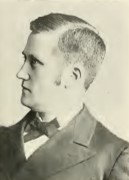 LARS M. RAND came from that station in life
with which he has in the years of his later success and
prosperity always retained a large sympathy. He is the
son of Mathias O.
Rand, a laborer in Bergen, Norway, where he was
born January 24, 1857. He comes of a long lived family.
His four grandparents all lived to be over ninety years
of age. Mr. Rand attended the common schools of Bergen,
and of Minnesota after his removal to this country he
came to America in 1875. LARS M. RAND came from that station in life
with which he has in the years of his later success and
prosperity always retained a large sympathy. He is the
son of Mathias O.
Rand, a laborer in Bergen, Norway, where he was
born January 24, 1857. He comes of a long lived family.
His four grandparents all lived to be over ninety years
of age. Mr. Rand attended the common schools of Bergen,
and of Minnesota after his removal to this country he
came to America in 1875.
He took the literary course at the State Normal
School at Winona. After leaving school he read law with
Hon. William H. Yale, of that city. He was admitted to
the practice of law there in 1884, and in the same year
was elected Judge of Criminal Court in the city of
Winona. He held this office until the latter part of
1883, when he removed to Minneapolis in search of a
larger field for the employment of his talents in the
practice of his profession. In 1887 City Attorney
Seagrave Smith appointed Judge Rand as his assistant,
and he served two years in that capacity. Since that time
he has been a member of the well-known law firm of
Gjertsen & Rand, and enjoys a lucrative practice. In
1890 he was elected to the city council from the Sixth
ward, and was re-elected alderman from the same ward in
1894, both times with a very large majority. Judge Rand is a
Democrat, and is a member of the Democratic state
central committee. He has for a number of years taken an
active part in promoting the interests of his party, and
is recognized as one of its influential members in this
state. He is democratic in his sympathies and feelings,
and has achieved a reputation as an advocate of the
interests of the common people. In official life
he has always opposed the granting of franchises and
special privileges, and took an active part in
opposition to the Street Railway Company in their long
controversy with the council over the question of
transfers, a controversy which finally resulted in the
complete triumph of the council and the attainment of a
system of transfers which is probably as nearly perfect
as it could be made, and altogether in the interest of
the public.
Judge Rand, as a member of the
council, opposed the existing garbage and gas and
electric contracts which he regards as unfavorable to
the city. He is an earnest advocate of the city owning
its own street railway and lighting plants. He is also a
persistent advocate of eight hours as a sufficient work
day, and of the adoption of that rule in all public work
by the city. Judge Rand is a Mason, Knights of Pythias,
Turner, and a member of the Benevolent and Protective
Order of Elks. He is identified with the Lutheran
Church, and in 1884 was married to Miss Jennie M. Beebe,
of Winona. They have two children, Lars and
Florence.
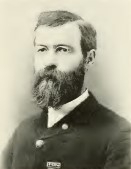 JOHN PATTERSON REA was born on election day
and has taken an active interest in politics ever since.
He comes of a line of distinguished ancestors. His
father, Samuel A. Rea, was a woolen manufacturer. His
paternal grandfather, Samuel Rea, was a soldier in the
Revolution and a cousin of General John Rea, of
Pennsylvania, who after the Revolution served many years
in the legislature of Pennsylvania and in the congress
of the United States. Judge Rea’s mother’s maiden name
was Ann Light. She was the daughter of Samuel Light, of
Lebanon County, Pennsylvania, who built the New Market
iron works in that county in 1807 or 1808, and
granddaughter of Jacob Light, who settled at Cincinnati,
Ohio, in 1791. Her mother was a daughter of John Light,
secretary of the meeting that adopted the Lebanon
resolves in 1775, and who was a member of the Lancaster
committee of safety during the Revolution. His
grandmother on his father’s side was Mary Patterson, a
cousin of General Robert Patterson, of
Philadelphia. JOHN PATTERSON REA was born on election day
and has taken an active interest in politics ever since.
He comes of a line of distinguished ancestors. His
father, Samuel A. Rea, was a woolen manufacturer. His
paternal grandfather, Samuel Rea, was a soldier in the
Revolution and a cousin of General John Rea, of
Pennsylvania, who after the Revolution served many years
in the legislature of Pennsylvania and in the congress
of the United States. Judge Rea’s mother’s maiden name
was Ann Light. She was the daughter of Samuel Light, of
Lebanon County, Pennsylvania, who built the New Market
iron works in that county in 1807 or 1808, and
granddaughter of Jacob Light, who settled at Cincinnati,
Ohio, in 1791. Her mother was a daughter of John Light,
secretary of the meeting that adopted the Lebanon
resolves in 1775, and who was a member of the Lancaster
committee of safety during the Revolution. His
grandmother on his father’s side was Mary Patterson, a
cousin of General Robert Patterson, of
Philadelphia.
Judge John P. Rea, the subject of this sketch,
was born in Lower Oxford, Chester County, Pennsylvania,
October 13, 1840. He attended the common schools and
Hopewell Academy for four terms. In 1867 he graduated in
the classical course at Ohio Wesleyan University,
Delaware, Ohio. He was prize essayist of the academy in
1860 and also prize essayist of his class in college,
and he was selected by his class in 1866, as president
of the Zetagathean Society, to sign the graduation
diplomas. He studied law for about six months at Piqua,
Ohio, but completed his law studies with Honorable O. J.
Dickey, of Lancaster, Pennsylvania, and was admitted to
the bar August 20, 1868. He practiced there till
December, 1875. He removed to Minneapolis January 2,
1876, and was editor of the .Minneapolis Tribune from
January 10, 1876, till May 1, 1877. Since that time he
has practiced law in Minneapolis, except while serving
on the bench.
He entered the army as a private in Company B,
Eleventh Ohio Infantry, April 16, 1861. He was tendered
and declined a second lieutenancy in the Eighteenth
United States Infantry, July, 1861. He helped to
recruit Company I, First Ohio Volunteer Cavalry, in
August, 1861, and was commissioned second lieutenant of
that company.
He was afterwards promoted to first lieutenant
and on April 1, 1863, was raised to the rank of captain.
November 25, 1863 he was breveted major for gallantry in
action at Cleveland, Tennessee.
He served until November 22, 1864, and was then
mustered out on the expiration of his enlistment as the
senior captain of the regiment.
He was detailed by General Thomas to command his
escort in May, 1862, but preferring to remain in his
company obtained a release from the detail.
When at home with his company in February, 1864,
he was offered and declined a commission as colonel of a
new regiment. He was in every engagement of his company
up to the close of his service, and commanded it in the
battles of Blackland, Bardstown, Washington, Perryville,
Galatin, Stone River, Tullahoma, Nolensville, Elk River,
Alpine, Chickamauga, Shelbyville, MacMinnville,
Farmington. Cleveland, Charlestown, relief of Knoxville,
Moulton, Decatur, Rome, Kenesaw Mountain, Lovejoy
.Station, Kilpatrick’s raid around Atlanta and on
numerous scouting raids. He only missed ten days of
service during the term of his enlistment, eight of
which days were while in the hands of the enemy as a
prisoner.
Judge Rea was one of the early
members of the Grand Army of the Republic, having joined
at Piqua, Ohio, in December, 1866, and was a delegate to
the first department encampment of that state. He has
been post commander of George. H. Thomas Post at
Lancaster, Pennsylvania, and of George N. Morgan Post of
Minneapolis, senior vice commander department of
Minnesota for 1881 and 1882, department commander in
1883, senior vice commander-in-chief in 1884 and 1885
and commander-in-chief in 1887 and 1888.
Judge Rea has also been actively
interested in politics, and made his first speech in
favor of the abolition of slavery in 1857. In 1858 he
stumped Chester County, Pennsylvania, for Honorable John
Hickman, and was on the stump for the Republican party
for every year from that time until he removed to
Minnesota. He learned his
politics from John Hickman and Thadeus Stevens, and was
frequently elected to membership on political committees
and in political conventions. He was appointed assessor
of internal revenue for the Ninth Pennsylvania district
by President Grant in 1869, and held the office until it
was abolished in May, 1873. Since coming to Minnesota he
has held the office of judge of probate court in 1877
and was re-elected in 1879 and declined a third term. He
was appointed judge of the Fourth judicial district in
April, 1886 was elected to succeed himself without
opposition in the fall of that year and served until
July, 1890, when he resigned, he has been a member of
the law firms in Minneapolis of Rea & Hooker, Rea,
Hooker & Woolley, Rea, Woolley & Kitchel, Rea
& Kitchel. Rea, Kitchel & Shaw, Rea, Miller
& Torrance, Rea & Hubachek, and is now the head
of the firm of Rea & Healey.
He was a member of the Phi Kappa
Psi college society at Ohio Wesleyan University and was
president of the executive council of that fraternity
for two years, is a member of the Sons of the Revolution
and the Loyal Legion, holding the office of junior vice
commander for Minnesota for one year, and was also for
one year a member of the council in chief of the order.
He was brigadier general of the staff of Governor
Hubbard for two years, and a member of the board of
visitors of West Point Academy for the year 1893. He has
always been a Republican, but refused in 1892 to support
the Republican candidate for president, preferring Mr.
Cleveland. On the current financial issue be proclaims
himself an uncompromising bimetallist. Judge Rea is a
member of the Presbyterian Church, and was married
October 26, 1869 to Emma M. Gould, of Delaware, Ohio.
They have no children.
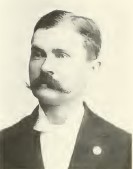 LOUIS A. REED is a practicing attorney-at
law. Mr.
Reed was a farmer’s boy, his father, Adam Reed, being
engaged in the business of farmer and miller in Mason
County, Illinois, where the subject of this sketch was
born January 23, 1855. His father was of German descent,
while his mother’s ancestry was English. Mr. Reed had only
the early educational advantages which come to the
farmer boy of the common school during the winter, and
plenty of muscle training and muscle building in the
summer on the farm. He had a taste for books, however,
and in a course at Illinois Normal University, at
Normal, Illinois, prepared himself for the profession of
a teacher. He also took a partial course at the Illinois
Industrial University at Champaign, but left college at
the end of his sophomore year. He taught school and
continued his studies by himself. He was attracted
toward the profession of law and began the study of law
in the office of George W. Ellsbury, at Mason City,
Illinois. LOUIS A. REED is a practicing attorney-at
law. Mr.
Reed was a farmer’s boy, his father, Adam Reed, being
engaged in the business of farmer and miller in Mason
County, Illinois, where the subject of this sketch was
born January 23, 1855. His father was of German descent,
while his mother’s ancestry was English. Mr. Reed had only
the early educational advantages which come to the
farmer boy of the common school during the winter, and
plenty of muscle training and muscle building in the
summer on the farm. He had a taste for books, however,
and in a course at Illinois Normal University, at
Normal, Illinois, prepared himself for the profession of
a teacher. He also took a partial course at the Illinois
Industrial University at Champaign, but left college at
the end of his sophomore year. He taught school and
continued his studies by himself. He was attracted
toward the profession of law and began the study of law
in the office of George W. Ellsbury, at Mason City,
Illinois.
In casting about for a more promising field for
the practice of his profession he decided upon
Minneapolis and came to Minnesota in July, 1880. He
entered the office of Rea, Woolley & Kitchel, and
continued his study until April 1, assisted him as
assistant county attorney of Hennepin County, but
without compensation from the county. On December 1,
1883. he formed a partnership with John G. Woolley and
Charles P. Biddle, under the firm name of Woolley, Biddle &
Reed. After the dissolution of this firm he entered into
partnership with Robert D. Russell, now judge of the
district court, and George D. Emery, ex-judge of the
municipal court, the firm’s name being Russell, Emery
& Reed. This partnership was formed January 1, 1886.
Still later he became a partner with William A. Kerr, in
the firm of Reed & Kerr, which partnership was
maintained until Mr. Kerr was elected to the municipal
bench. Mr. Reed is a Republican, but has held no public
office. His devotion to his party and his skill in the
management of political affairs made him chairman of the
Republican county committee of Hennepin County in 1890.
In 1894 he was made chairman of the Republican judiciary
committee, and he still holds that position. His conduct of
campaigns of which he was the directing spirit, has been
distinguished b}’ ability and success. Mr. Reed is a
Mason, a member of Khurum Lodge, No. 112. is a Knight of
Pythias and a Modern Woodman, and, also, a member of the
Commercial Club, of Minneapolis. His church
relationship is with the Lowry Hill Congregational
Church, of which he is one of the supporters. Mr. Reed
was married July 8, 1880, to Isabelle Trent. They have
two boys, Albert P. and Russell C. Mr. Reed has taken a
high rank in the legal profession of Minneapolis, and is
held in general esteem on account of his sterling
qualities and recognized
ability.
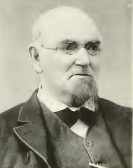 DAVID REYNOLDS, better known as General David
Reynolds, was born Christmas Day, 1814, in Washington
County, Pennsylvania, and died in Minneapolis February
5, 1896. On his father’s side his ancestors were English
and Welsh, and on his mother’s. Huguenots. When he was
eight years of age the family removed to Monroe County,
Ohio, and nine years later to Henry County, Indiana.
With but limited educational advantages, such as the
common schools of the time afforded, he entered a
general store as clerk, and was there employed for three
years. His ambition, however, was to obtain a better
education, and he became a student at Asbury University,
at Greencastle, Indiana. He had as his associates in
that school men who afterwards became distinguished, as
Senator Voorhees, Senator McDonald, Senator Harlan and
Governor Porter.
Upon completing his
course at the university he entered the law office of
Fletcher, Butler & Yandes, at Indianapolis, and was
admitted to practice in all the courts of the state. DAVID REYNOLDS, better known as General David
Reynolds, was born Christmas Day, 1814, in Washington
County, Pennsylvania, and died in Minneapolis February
5, 1896. On his father’s side his ancestors were English
and Welsh, and on his mother’s. Huguenots. When he was
eight years of age the family removed to Monroe County,
Ohio, and nine years later to Henry County, Indiana.
With but limited educational advantages, such as the
common schools of the time afforded, he entered a
general store as clerk, and was there employed for three
years. His ambition, however, was to obtain a better
education, and he became a student at Asbury University,
at Greencastle, Indiana. He had as his associates in
that school men who afterwards became distinguished, as
Senator Voorhees, Senator McDonald, Senator Harlan and
Governor Porter.
Upon completing his
course at the university he entered the law office of
Fletcher, Butler & Yandes, at Indianapolis, and was
admitted to practice in all the courts of the state.
Soon after this the Mexican war broke out and he
was appointed by Governor Whitcomb adjutant general of
the state of Indiana, acting in that capacity he
organized, equipped and sent forward all the troops
enlisted from that state. Although this proved a very
laborious task, he discharged it personally without
either an assistant or clerk, and as compensation
received the sum of one hundred dollars a year.
Subsequently he was commissioned to go to Washington to
make a settlement for moneys advanced by the state, but
his services were so highly appreciated that at this
time he was paid a reasonable compensation for his work.
His brother Major L. S. Reynolds, was inventor
and patentee of important improvements in flour milling,
which were the beginning of modern methods of flour
manufacture. David was engaged to go to Eastern cities
and finally to England and France to introduce these new
appliances. General Reynolds, in 1865, together with his
brother, Major L. S., and his brother Dr. T. L.
Reynolds, removed to Minneapolis. He foresaw the future
growth of this city and made investments on Ninth and
Tenth streets and First and Second avenues South, which
have come to be of great value. Although he did not
engage actively in business pursuits, he contributed in
many wavs to the general advancement and prosperity of
the city.
In politics. General Reynolds was always an
ardent Democrat. His last public appearance was as
president of a large ratification meeting held in
Minneapolis on the occasion of President Cleveland’s
first election. His church connections were with the
Methodist denomination, and in 1874 he organized what
was called the “Little Grant” Bible class. It began with
a single member but afterwards grew to number three
hundred and fifty-two. On its list of members may be
found the names of many of our most prominent
professional and businessmen, and during its existence
it gained a wide fame over the whole country, and its
leader represented it at one time in a convention at
Chautauqua.
General Reynolds was married in Indianapolis,
April 2, 1863, to Miss Jennie McQuat who was of Scotch
lineage.
She died a year and
one month later at Rochester, New York, leaving a
daughter named Jennie, at present a resident of
Minneapolis and widow of the late George L. Hilt,
General Reynolds left an honorable name and the record
of valuable and long continued usefulness in the
community and his memory is honored by all who knew
him.
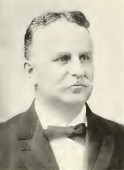 ROBERT
DONOUGH RUSSELL The subject of this sketch has been a
resident of Minneapolis since 1883. He was born at
St. Louis, on March 9,
1851, where his parents had lived for a number of years.
The father, Charles E. Russell, who was a native of New
Jersey, but came West in 1837, was a mechanic of
industrious habits and superior intelligence and
pronounced radical views. His wife, who was Miss Louisa
Mathews, was a lady of no ordinary attainments.
During the rebellion she engaged in the work of
sanitary commission, doing noble work among the soldiers
of the Union army. Of the eight boys in the family, five
grew to manhood. The eldest became president of Barean
College, Jacksonville, Illinois. Another brother is Sol
Smith Russell, the celebrated actor. Four of the
brothers bore arms during the rebellion, but Robert was
too young to take part in the war. ROBERT
DONOUGH RUSSELL The subject of this sketch has been a
resident of Minneapolis since 1883. He was born at
St. Louis, on March 9,
1851, where his parents had lived for a number of years.
The father, Charles E. Russell, who was a native of New
Jersey, but came West in 1837, was a mechanic of
industrious habits and superior intelligence and
pronounced radical views. His wife, who was Miss Louisa
Mathews, was a lady of no ordinary attainments.
During the rebellion she engaged in the work of
sanitary commission, doing noble work among the soldiers
of the Union army. Of the eight boys in the family, five
grew to manhood. The eldest became president of Barean
College, Jacksonville, Illinois. Another brother is Sol
Smith Russell, the celebrated actor. Four of the
brothers bore arms during the rebellion, but Robert was
too young to take part in the war.
After the family moved to
Jacksonville in 1860, he commenced, at only nine years
of age, to learn his father’s trade, that of a tinner.
Until he was eighteen years old his work at the bench
alternated with short periods of schooling: but he
managed to fit himself for college, and in 1868 he
entered the sophomore class of Illinois College.
While attending college he supported himself by
labor and teaching. He graduated in 1871 with the
highest honors, being valedictorian of his class. Within
a year he commenced the study of law in the office of
Isaac L. Morrison, of Jacksonville.
His admission to the bar was in September, 1874,
and at the same time he received the degree of Master of
Arts from his alma mater. Almost immediately
upon his admission, the young lawyer was appointed city
attorney of Jacksonville, a position which he held for
three terms. He was also made a partner in the law firm
of Dummer & Brown, and upon the death of Judge
Dummer in 1878, he continued with Mr.
Brown until his removal to Minneapolis. This
partnership brought Mr. Russell into very extensive
practice, in which the affairs of several railroads
represented by the firm, were of the most importance.
Questions of state control of railroads and the right to
prescribe rates, were then comparatively new. In the
extensive litigation which followed the assertion of
those powers, the firm of Dummer, Brown & Russell
was prominent. In connection with some of these
important litigations, Mr. Russell visited Washington in
1881, and was admitted to practice in the United States
supreme court. The attractions of Minneapolis as a place
to live, led two of the brothers, Robert and Sol Smith,
to choose this city as their home. Soon after his
arrival, Mr. Russell formed the law
partnership of Russell, Emery & Reed. The firm later
became Russell, Calhoun & Reed, and carried a large
practice.
The
first public service rendered by Mr. Russell in
Minneapolis was as city attorney. He was appointed to
that office on January 1, 1889, and served for four
years. Perhaps the most important litigation during his
term was that connected with the dispute between the
city and several railroad companies, relative to the
bridging of the railroad tracks on Fourth Avenue
North. The case had reached
the supreme court of the United States when Mr. Russell
succeeded in arriving at a compromise which was
acceptable to the railroad companies and advantageous to
the city. This allowed the work of the bridging to go
forward, much to the benefit of the people.
In the autumn of 1891, Mr. Russell received the
Republican nomination for judge of the district court.
The Democratic party was successful at the succeeding
election, but in May, 1893, Judge Lochren retired from
the bench, and Mr. Russell was appointed to fill out his
term. In November, 1894, he was elected to succeed
himself for the six years’ term. Judge Russell was
president of the Minneapolis Bar Association in
1892-93. He is a trustee of
Illinois College, a prominent member of Plymouth
Congregational church in Minneapolis, and a
public-spirited and progressive citizen. He was married
on September 7, 1876, to Miss Lilian M. Brooks, of
Danville, Illinois. Their living children are Dorothy
Russell, aged nine years, and Jean Russell, aged five
years.
 DENNIS EDWARD
RYAN There are among the young businessmen in the city
of Minneapolis many who can justly lay claim to the
title of a self-made man, but none who have proven
themselves more deserving of it than Dennis Edward Ryan,
of the firm of D. E. Ryan & Co.,
jobbers and commission merchants.
Mr. Ryan is of Irish descent. His father Thomas
Ryan, and mother, Catharine Thimlin (Ryan) were both
born in Ireland. Emigrating to this
country they located in Philadelphia, where Dennis was
born, March 28, 1862. When the boy was but
eight years old they removed West and settled in
Dubuque, Iowa, subsequently locating at Independence, in
the same state. Dennis received but a common school
education in the public schools of the latter place. His
father having died when he was but fifteen years old,
the support of his mother, three younger brothers and
one sister rested upon him until the children had
reached the ages of self-support and until his mother’s
death. DENNIS EDWARD
RYAN There are among the young businessmen in the city
of Minneapolis many who can justly lay claim to the
title of a self-made man, but none who have proven
themselves more deserving of it than Dennis Edward Ryan,
of the firm of D. E. Ryan & Co.,
jobbers and commission merchants.
Mr. Ryan is of Irish descent. His father Thomas
Ryan, and mother, Catharine Thimlin (Ryan) were both
born in Ireland. Emigrating to this
country they located in Philadelphia, where Dennis was
born, March 28, 1862. When the boy was but
eight years old they removed West and settled in
Dubuque, Iowa, subsequently locating at Independence, in
the same state. Dennis received but a common school
education in the public schools of the latter place. His
father having died when he was but fifteen years old,
the support of his mother, three younger brothers and
one sister rested upon him until the children had
reached the ages of self-support and until his mother’s
death.
At that early age he secured
employment with M. M. Walker & Co.. a wholesale
fruit house at Dubuque. as a salesman.
From that time to this he has followed the fruit
and produce business. He remained in the employ of the
same firm at Dubuque until his removal to Minneapolis in
February, 1884. Here he secured the position of salesman
with the fruit and produce firm of Miller & Miller,
but only remained in their employ about a year. He then
became engaged with J. C. Walters, subsequently the firm
of Walters & Wagner, dealers in fruit and produce,
as a salesman in the city and on the road. He was
connected with this house until 1891, at which time he
engaged in business for himself in the same line of
trade at which he had been working, with offices located
at 106 First Avenue North. Mr. Ryan’s means were rather
limited, having less than two hundred dollars capital to
start in business with: but business rapidly increased,
and only six months after starting he took in
partnership D. H. Thornton. Mr.
Thornton, however, withdrew from the firm six
months later to engage in the grocery business.
Since that time Mr. Ryan has continued the
business alone, under the firm name of D. E. Ryan &
Co. In two years’ time the business of this firm had so
increased that it necessitated moving to larger quarters
at 129 First Avenue North where it occupied the entire
building. The firm now has commodious and spacious
quarters in a three story building on Second Avenue
North and Sixth Street, which was fitted in all
particulars and details for the carrying on of the
business in which the firm is engaged. D. E. Ryan &
Co is now one of the largest jobbing and commission
houses engaged in the fruit and produce trade in
Minneapolis.
Mr. Ryan is a young man of
enterprise and push, who has succeeded in building up a
competence by a close application to the business in
which he is engaged, and gives promise of taking a
leading place in the future commercial life of the City
of Minneapolis. Mr. Ryan is a member of
the Elks and of the Commercial Club of Minneapolis. He
is an attendant of the Roman Catholic Church. In
February, 1889, he was married to Victoria McCarroll.
They have four children, Vivian May, aged six; Gerald
Carroll, aged four: Dennis Edward, aged two, and Doris
Margaret, born December 30, 1896.
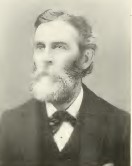 EDWARD SAVAGE
is a member of the legal profession in Minneapolis. His
father, Edward Savage, was a cousin of Chief Justice
John Savage, of New York; was a scientist of high
attainments and professor of chemistry and natural
science in Union College, Schenectady, New York. It was
while at work in the class room of that institution, and
at the early age of thirty years, that he sacrificed his
life to secure the escape of all his pupils after an
accidental explosion of a deadly gas which was being
handled in experiment in the class room. As a
consequence of inhaling the gas he died soon afterwards
from consumption. His ancestry was Scotch and Irish, and
settled in Washington County, New York. His wife, the
mother of the subject of this sketch, was Sarah Van
Vechten, daughter of Rev. Jacob Van Vechten, D. D., of
Schenectady, New York. On her father’s side she was of
Dutch descent, and on her mother’s side the
grand-daughter of the celebrated Scotch divine, Dr. John
Mason. She was married again, her second husband being
Professor Samuel G. Brown, of Dartmouth
College, afterwards president of Hamilton College and
biographer of Rufus Choate. Professor Francis Brown, now
of Union Theological Seminary, and an eminent Oriental
linguist, is their son. EDWARD SAVAGE
is a member of the legal profession in Minneapolis. His
father, Edward Savage, was a cousin of Chief Justice
John Savage, of New York; was a scientist of high
attainments and professor of chemistry and natural
science in Union College, Schenectady, New York. It was
while at work in the class room of that institution, and
at the early age of thirty years, that he sacrificed his
life to secure the escape of all his pupils after an
accidental explosion of a deadly gas which was being
handled in experiment in the class room. As a
consequence of inhaling the gas he died soon afterwards
from consumption. His ancestry was Scotch and Irish, and
settled in Washington County, New York. His wife, the
mother of the subject of this sketch, was Sarah Van
Vechten, daughter of Rev. Jacob Van Vechten, D. D., of
Schenectady, New York. On her father’s side she was of
Dutch descent, and on her mother’s side the
grand-daughter of the celebrated Scotch divine, Dr. John
Mason. She was married again, her second husband being
Professor Samuel G. Brown, of Dartmouth
College, afterwards president of Hamilton College and
biographer of Rufus Choate. Professor Francis Brown, now
of Union Theological Seminary, and an eminent Oriental
linguist, is their son.
The subject of this sketch was born
May 26, 1840, at Schenectady.
His education began with a private tutor under
the shadow of Dartmouth College, and partly under the
tutelage of Walbridge A. Field, now chief justice of the
supreme court of Massachusetts.
He afterwards studied at Phillips College,
Andover, under Dr. Samuel Taylor, and graduated from
Dartmouth College in the class of 1860. Among his
classmates were Judge Daniel Dickinson, formerly of the
Minnesota supreme court; Daniel G. Rawlins, at one time
surrogate of New York City and County, and Rev. Arthur
Little, D. D. Mr. Savage took the first honors of his
class at graduation, was a member of the Alpha Delta Phi
and the Phi Beta Kappa. He studied law at the Albany law
school where he was admitted to the bar, and began the
practice of his profession in New York state.
He
came to Minneapolis in 1880 and has practiced law here
ever since. At one time he was in partnership with P. M.
Woodman, then alone for several years, and for the last
four years has been associated with Charles E. Purdy,
the style of the firm being Savage & Purdy. Mr.
Savage has been identified with much important
litigation in Minneapolis, the case of most interest,
perhaps, being an action involving the title of a large
tract of land, one hundred and twenty acres, within the
city limits of Minneapolis, in what was known as the
“Oakland and Silver Lake litigation.” For five years he
bore the chief burden in this defense, and finally
succeeded in maintaining the title of the defendants,
contrary to the general expectations of the public and
the bar. It is said that the doctrine of “equitable
estoppel” was perhaps carried further in that case than
in any other which preceded it in English or American
practice. The result was a severe blow to the practice
of speculative litigation, based on technical defects in
land titles which had previously been quite prevalent in
this state. Mr. Savage is an enthusiast in music, was
the organist in the college church and chapel, and
earned his first dollar while serving in that capacity.
He is not a partisan in politics, but is always
interested as a citizen in the success of good men and
sound measures. He was married in 1866 to Sarah
Elizabeth Smith, who died in 1869. He was married again
in 1876 to Lydia A. Hoag. They have two daughters,
Euphemia A. and Margaret H. Mr. Savage is a member of
the Presbyterian church.
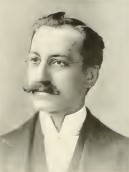 JOHN
ALBERT SCHLENER, is a merchant engaged in the stationery
trade in Minneapolis. He was born in Philadelphia,
February 24, 1856, but his parents removed the following
year to St. Anthony, Minnesota. His father, John A.
Schlener, and his mother, Bertha Sproesser
(Schlener), were of German descent, industrious and
frugal people, who taught their son the habits of
economy, industry and thrift. The father opened a bakery
in St. Anthony, which he conducted until his death in
1872. The son was sent to a private school and
afterwards to the public schools in St. Anthony, and
also attended a commercial school, where he received a
business training. JOHN
ALBERT SCHLENER, is a merchant engaged in the stationery
trade in Minneapolis. He was born in Philadelphia,
February 24, 1856, but his parents removed the following
year to St. Anthony, Minnesota. His father, John A.
Schlener, and his mother, Bertha Sproesser
(Schlener), were of German descent, industrious and
frugal people, who taught their son the habits of
economy, industry and thrift. The father opened a bakery
in St. Anthony, which he conducted until his death in
1872. The son was sent to a private school and
afterwards to the public schools in St. Anthony, and
also attended a commercial school, where he received a
business training.
He was only twelve years old,
however, when he left school to engage in such
enterprises as were open to boys of his age. He was
employed for a time in the toll house of the suspension
bridge, and assisted the toll gatherer in the care of
the bridge and in the keeping of the accounts. This
position brought him a wide acquaintance, and was of no
small value on that account. At the age of sixteen young
Schlener was employed as a clerk in the book and
stationery store of Wistar, Wales & Co. The firm
changed several times, Mr. Wales having different
partners, but Mr. Schlener continued in connection with
the firm, and on the organization of the firm of Bean,
Wales & Co., he was given a third interest in the
business. Mr. Wales subsequently retired, but Mr.
Schlener continued in the business with Kirkbride and
Whitall until 1884. He then opened a store on his own
account, and is carrying on the business very
successfully. He has proven himself
to be possessed of superior business qualifications, and
is looked upon as one of the successful merchants of the
city.
He is also public-spirited, and has
taken an active interest in various efforts to promote
the general good of the community, serving as director
of the Business Union and as a member of other
commercial bodies. He early became a Mason, and his
sterling qualities and deep interest in the work of that
organization have led him through the various degrees
from the lowest to the highest. He is frequently honored
with the office of delegate to Masonic conventions, and
with positions of trust in different aid and insurance
associations connected with the order. In politics Mr.
Schlener is a Republican, and takes an active part in
the management of his party affairs locally, and in 1896
he was elected a member of the school board. His parents
were Lutherans and he was baptized in the Lutheran
Church, but his personal preference has been the
Congregational society, and he is an attendant at
Plymouth Church. He has a pleasant home on Nicollet
Island, where he resides with his mother and his wife,
formerly Miss Grace Holbrook of Lockport to whom he was
married in March, 1892.
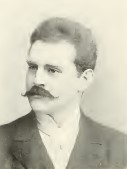 FRIEDRICH
SCHMITZ Friedrich Johann Philipp Hubert Jacob Schmitz
since he came to America has dropped the greater part of
his full name, and writes as a signature simply, Fritz
Schmitz. He was born in Duesseldorf, on the Rhine August
26, 1867, the son of Philipp Schmitz and Carolina Earths
(Schmitz). His ancestors on his father’s side were of
the Swiss nobility. Their coat of arms
was a white lion holding a yellow star on a red ground,
and is entered in the books of European heraldry. They
settled in Rhineland early in the Fifteenth
century. Philipp Schmitz was
an art teacher in the Royal Academy at Duesseldorf. He
was one of the founders, and called the godfather of the
artists’ society known as Malkasten. He was an officer
in the Revolutionary Army of 1848, and after the
suppression of the Revolution was pardoned, being more
fortunate in that respect than one of his brothers, who,
in spite of his position as an officer of the regular
army, was on the Revolutionary side. He fled to America,
the refuge of so many of the revolutionists of 1848;
entered the Northern army at the outbreak of the Civil
War and fell in battle near Nashville. Carolina Earths
was the daughter of a Revolutionist Von Earths, who
dropped the Von when he became a leader of the
Revolutionist party in 1848. He was a prominent lawyer
in Duesseldorf. FRIEDRICH
SCHMITZ Friedrich Johann Philipp Hubert Jacob Schmitz
since he came to America has dropped the greater part of
his full name, and writes as a signature simply, Fritz
Schmitz. He was born in Duesseldorf, on the Rhine August
26, 1867, the son of Philipp Schmitz and Carolina Earths
(Schmitz). His ancestors on his father’s side were of
the Swiss nobility. Their coat of arms
was a white lion holding a yellow star on a red ground,
and is entered in the books of European heraldry. They
settled in Rhineland early in the Fifteenth
century. Philipp Schmitz was
an art teacher in the Royal Academy at Duesseldorf. He
was one of the founders, and called the godfather of the
artists’ society known as Malkasten. He was an officer
in the Revolutionary Army of 1848, and after the
suppression of the Revolution was pardoned, being more
fortunate in that respect than one of his brothers, who,
in spite of his position as an officer of the regular
army, was on the Revolutionary side. He fled to America,
the refuge of so many of the revolutionists of 1848;
entered the Northern army at the outbreak of the Civil
War and fell in battle near Nashville. Carolina Earths
was the daughter of a Revolutionist Von Earths, who
dropped the Von when he became a leader of the
Revolutionist party in 1848. He was a prominent lawyer
in Duesseldorf.
The subject of this sketch attended
the stadtiches gymnasium (high school) in Duesseldorf,
from which he graduated at the age of seventeen. His
parents desired him to become an army officer, but his
wish was to become a musician. He had been instructed in
violin playing since his twelfth year, his teacher being
Robert Zerbe, a well known conductor of the Duesseldorf
symphony orchestra. Later young Schmitz was under the
training of a celebrated French violinist, Emile Sauret,
who induced his pupil’s parents to send him to the
famous Cologne Conservatory. There Fritz studied for
five years. His principal instructor was Gustav
Hollander, now director of Stern’s Conservatory, in
Berlin, on the violin. His instructors in
other branches were Professors Huelle, Jensen, Neitzel,
Heinrich Zoellner and Arnold Mendelssohn. About this
time he also visited the Bonn University. After a year
and a half of study at the conservatory, young Schmitz
competed for the Peter Mueller “stiftung” and a
government prize, and held both of them while he studied
in Cologne.
Having completed his studies in
Cologne he was appointed concert master in Duesseldorf,
where he became a prominent soloist and teacher of the
violin. Shortly afterwards he
was appointed teacher of the violin in a New York
conservatory. He accepted this position with the
intention of returning to Europe within a year, his
principal object in coming to America being to see the
country. With the same object
in view he accepted an offer of membership in the
Theodore Thomas Chicago orchestra, where he played in
1891, 1892 and 1893. He had in the meantime become so
well pleased with the country that he determined to make
America his home. At the conclusion of the Columbian
Exposition he went to New York under engagement with
Walter Damrosch, of the New York Symphony Orchestra.
While there he met Walter Petzet, then director of the
musical department of the Manning College in
Minneapolis, who offered him the position of first
violin teacher in this school. Feeling that his forte
was not orchestra playing so much as teaching and solo
work, he accepted Mr. Petzet’s offer and came to
Minneapolis in 1894, where he is held in high esteem as
an artist. More recently both Mr. Petzet and Mr. Schmitz
have withdrawn from the Manning school, and Mr.
Schmitz is engaged as a private teacher of the
violin.
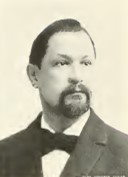 GUSTAV
ADOLPH SCHUBERT is an orchestral and band leader in
Minneapolis. Mr. Schubert is a native
of Eilenberg, Germany, where he was born August 11,
1848. He attended the common school, which in that city
was by no means to be compared with the American
institution. At an early age he
developed unusual musical talent and was sent for
musical education to Leipsic. GUSTAV
ADOLPH SCHUBERT is an orchestral and band leader in
Minneapolis. Mr. Schubert is a native
of Eilenberg, Germany, where he was born August 11,
1848. He attended the common school, which in that city
was by no means to be compared with the American
institution. At an early age he
developed unusual musical talent and was sent for
musical education to Leipsic.
In
1865 he became a member of the Symphony Orchestra in
Halle, which at that time was one of the finest
organizations in Germany. He also played in several
concerts under the famous musical director, Dr. Robert
Franz. Subsequently he was chosen conductor of the
orchestra in Flensburg, Germany. During all this time he
continued the study of his art and was awarded his
diploma as a singing teacher in Germany in 1876. In May,
1884, he removed with his family to America and located
in Minneapolis. In the following year he won the second
prize at the thirteenth German singing contest in St.
Paul, and in 1S87 he again won the second prize of the
fourteenth contest of the German Singing Society in
Minneapolis. Prof. Schubert was for
a time connected with Danz’s orchestra, but is now
engaged as the leader and conductor of an orchestra and
military band which bears his own name. In 1889 he
formed a partnership with E. F. Thyle which continued
until 1891. Upon its dissolution Mr.
Schubert continued as a leader of the Schubert
orchestra and has played important engagements in
Minneapolis and vicinity.
Before coming to America, Mr.
Schubert, as a native of Germany, was enlisted in the
army of the empire, and fought in the war between
Germany and France in 1870 and 1871. He was corporal of
the Twenty-fifth Infantry Regiment in that war. Previous
to the outbreak of that war he was a soldier in
Flensburg. He fought in the battles of Villerechsel. and
the three days’ fighting of Hericourt, besides several
other important engagements.
He
is a member of the Turner Society, the Knights of Honor, the
Krieger Society, the Western Knights, the Sons of
Herrmann and the Order of the World. He is also a member
of the German Lutheran Church. On the sixth day of
March, 1872 he was married to Mrs. Christine Johannsen.
They have three children, Caroline Jacobine, who is now
Mrs. F. G. Callahan, Katharine
Charlotte and Wilhelmene
Pauline.
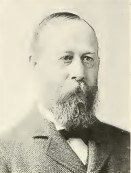 CORNELIUS B. SHOVE is of a
family which traces its line for two hundred and fifty
years, to the early settlement of New England. Alonzo
Shove, father of Mr. C. B. Shove, was a manufacturer of
boots and shoes at Syracuse, New York, where Cornelius
was born November 8, 1844. Six years later the family
moved to Manitowoc, Wisconsin, where the son passed his
boyhood and received the common school education
available in a county, village. CORNELIUS B. SHOVE is of a
family which traces its line for two hundred and fifty
years, to the early settlement of New England. Alonzo
Shove, father of Mr. C. B. Shove, was a manufacturer of
boots and shoes at Syracuse, New York, where Cornelius
was born November 8, 1844. Six years later the family
moved to Manitowoc, Wisconsin, where the son passed his
boyhood and received the common school education
available in a county, village.
When he was thirteen years old he
entered a banking and insurance office at Manitowoc. In
this position, which he occupied for eleven years, he
acquired a practical training in business which fitted
him for the responsible position which he has since
attained in the insurance business in this city. Mr.
Shove’s first experience in insurance was in 1868, when
he entered the employment of the late J. D. Bennett, of
Cincinnati, an old and successful insurance manager. For
a while Mr. Shove was stationed at Macon, Missouri, as a
local agent. When the Andes Insurance Company was
organized at Cincinnati, Mr. Shove removed to that city,
and was appointed special agent of the company. In this
position he traveled widely and acquired a large
experience in general insurance matters, and in the
management of the company’s affairs.
Afterwards he was appointed state agent of the
company for Iowa. The Andes was ruined by the great
Chicago and Boston fire, and for several years he was
engaged as special agent and adjuster of several
companies. In the year 1878 he came to Minneapolis, and
after a short time organized the Millers and
Manufacturers’ Insurance Company. This company was
organized under a new law authorizing a combination of
stock and mutual plans. It was something of an
innovation union established insurance theories, but has
proved a complete success. The Millers and
Manufacturers’ Insurance Company commenced business on
May 1, 1881. It is essentially a mutual company,
distributing to such of its policy holders as come under
the mutual agreement, the surplus of premiums paid by
them, over the actual cost of the insurance. Mr.
Shove has been Secretary and General Manager of
the company since its organization, until a few years
since he became its President. He is an inveterate
worker, and enthusiastic in his business, and proud of
the success of his company.
In
1883 Mr. Shove was married to Mrs. Carrie A. Norton, of
Chicago. They live at 1002 Hawthorn avenue, Minneapolis.
The position which he has since attained in the
insurance business in this city.
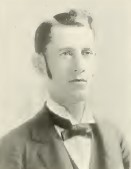 DAVID FERGUSON
SIMPSON is a judge of the Fourth Judicial District. Mr.
Simpson is of Scotch descent, both his parents being
born in Scotland. He takes a pride in
his Scotch ancestry, as is shown by his active
membership in the Caledonia Club, and his election to
the office of chief of that organization. His father,
William Simpson, was a well-to-do farmer near Waupun,
Wisconsin, where the subject of this sketch was born,
June 13, 1860. DAVID FERGUSON
SIMPSON is a judge of the Fourth Judicial District. Mr.
Simpson is of Scotch descent, both his parents being
born in Scotland. He takes a pride in
his Scotch ancestry, as is shown by his active
membership in the Caledonia Club, and his election to
the office of chief of that organization. His father,
William Simpson, was a well-to-do farmer near Waupun,
Wisconsin, where the subject of this sketch was born,
June 13, 1860.
Mr.
Simpson’s education commenced in the country district
school near his father’s farm and in the village schools
of Waupun. He took the two years’ preparatory course for
college in Ripon College, at Ripon, Wisconsin, followed
by a four years’ academical course in the Wisconsin
State University, from which he graduated in 1882. He
was given special honors in the department of history
and awarded the Lewis prize for the best commencement
oration. He had maintained a high grade of scholarship
through his course, and was appointed to fill the
position of professor of rhetoric during the absence of
the regular occupant of that chair in the university
during the college year of 1882—83.
He
had decided to become a lawyer, and took the law course
at the University of Wisconsin and at the Columbia Law
School in New York, receiving the degree of LL. B., from
each of these schools in 1884. The same year he was
admitted to the bar in the State of Wisconsin, but came
almost immediately afterwards to Minneapolis and began
the practice of law in this city in 1884. He was
appointed assistant city attorney of Minneapolis in
1891, was elected to the office of city attorney in
1893, and re-elected in 1895.
Mr.
Simpson is a Republican, and takes an active interest in
local and national politics. He has made a special study
of municipal government, and assisted in drafting the
general municipal law, which was adopted by the charter
commission, sitting concurrently with the legislature in
1895. At the session of the Municipal Reform League in
Minneapolis in 1894, Mr. Simpson was invited to be
present and outline the system of municipal government
in operation in Minneapolis, and prepared a paper which
was received with a great deal of interest by that body,
as an able argument in favor of what is known as the
council system of city government, of which Mr. Simpson
is an advocate. His conduct of the legal department of
the City of Minneapolis has been characterized by
distinguished ability, which has on more than one
occasion operated to the great advantage of the city.
Notable among the acts of his administration of this
office was his successful prosecution of the city’s case
before the special commission appointed to consider the
demands of the city for reduction in the price of gas.
This case was stubbornly contested by able legal counsel
on the opposite side, but Mr. Simpson’s presentation of
the case was so strongly made that it resulted in the
reduction of the price of gas to all consumers from one
dollar and sixty cents to one dollar and thirty cents
net. In 1896 Mr. Simpson was elected as a judge of the
Fourth Judicial District.
Mr.
Simpson was married January 14, 1886, to Josephine
Sarles a graduate of the University of Wisconsin in
1883. Mrs. Simpson took the first honors of her class,
and is active in the literary and benevolent societies
of Minneapolis. They have three
children Donald, Harold and John.
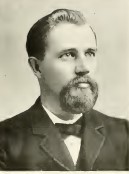 CHARLES A. SMITH, is a good
sample of what a resolute, industrious, intelligent boy,
unaided by fortune or friends, can accomplish in
commercial life in the Northwest. He is the son of a
soldier in the regular army of Sweden, and was born
December 11th, 1852, in the County of Ostergottland,
Sweden. After thirty-three years service in the army,
his father, in the spring of 1867, left Sweden with
Charles and an elder sister and came to America,
arriving in Minneapolis on the 28th of June. Two older
brothers had already preceded them and were located
here. Charles’ education
commenced in a small country school in Sweden, where
more importance was attached to committing the catechism
and Bible history to memory than to writing and the
knowledge of mathematics. His first lessons in English
were taken in a small log school house in Wright
County. CHARLES A. SMITH, is a good
sample of what a resolute, industrious, intelligent boy,
unaided by fortune or friends, can accomplish in
commercial life in the Northwest. He is the son of a
soldier in the regular army of Sweden, and was born
December 11th, 1852, in the County of Ostergottland,
Sweden. After thirty-three years service in the army,
his father, in the spring of 1867, left Sweden with
Charles and an elder sister and came to America,
arriving in Minneapolis on the 28th of June. Two older
brothers had already preceded them and were located
here. Charles’ education
commenced in a small country school in Sweden, where
more importance was attached to committing the catechism
and Bible history to memory than to writing and the
knowledge of mathematics. His first lessons in English
were taken in a small log school house in Wright
County.
Shortly after his arrival in this
city from the old country arrangements were made for him
to make his home with a farmer living in the southern
part of what is now the city of Minneapolis, near the
Milwaukee railroad shops. He was to work for his board
and clothing, and was employed chiefly in tending
cattle. While thus employed on the farm he picked a
large quantity of hazelnuts which he sold for seven
dollars, loaning the money to his brother at ten
percent. This was the first money he had ever earned.
He
had made good use of his time also in study, and the
fall of 1872 he entered the State University with the
intention of taking the regular course. He applied
himself very closely to his studies and his health soon
failed, so that he was obliged to leave school at the
end of the first year. In 1873 he obtained employment in
the general hardware store of J. S. Pillsbury & Co.,
of this city, where he continued for five years. He,
then, in the fall of 1878, with the assistance of
ex-Gov. Pillsbury, built a grain elevator at Herman,
Minnesota, and under the name of C. A. Smith & Co.
he continued the grain and lumber business there until
July, I884, when arrangements were made to begin the
manufacturing and wholesaling of lumber in Minneapolis.
He again took up his residence in this city, and the
partnership with ex-Gov. Pillsbury was continued until
1893, at which time the C. A. Smith Lumber Company was
incorporated, of which Mr. Smith is the president and
general manager. In addition to the saw mill and lumber
manufacturing business of this city, this company has
the controlling interest in a number of retail lumber
yards and general stores in different parts of the state
and in North and South Dakota. Mr. Smith says the secret
of his success has been his adoption of Franklin’s
advice, which he learned with his first English lessons,
viz., “To take care of the pennies, and the dollars will
take care of themselves.” He has tried to follow that
advice ever since he sold his hazelnuts in the fall of
1867. But Mr. Smith’s activities have not been confined
to the firm, of which he is a member. He was one of the
incorporators of the Swedish-American National Bank, the
Security Savings and Loan Association, and other
enterprises in this city and elsewhere.
Like most Swedish Americans, Mr.
Smith is a Republican in politics, and devotes as
much attention to it as his business will permit.
He has never held any office or asked for any,
but is prominent in the counsels of his party, having
been a member of city, county, state and national
conventions.
He
is a member of the English Lutheran Salem Congregation,
of Minneapolis: one of its organizers and one of its
trustees. Ho is also a member of the board of directors
of the English Lutheran seminary, of Chicago, and is
treasurer of the Evangelical Lutheran Synod of the
Northwest. He was married February 14th,
1878, to Johanna Anderson, a daughter of Olaf
Anderson, who after serving in the Swedish riksdag for a
number of years, emigrated with his family to this
country in 1857. and located in Carver county. Mr. Smith
has five children, two boys and three girls. Nanna A.,
Addie J., Myrtle E., Vernon A. and Carroll W.
 CYRUS LITTLE SMITH was born at
Dover, Wayne County, Ohio, January 21, 1845. John R.
Smith, his father, was a farmer, and while Cyrus was
still a small child his parents removed to Southern
Michigan, settling in an unbroken wilderness.
There were no schools on the Michigan frontier in
those early days, and Cyrus was taught to read by his
mother. As the country settled up, schools of a poor
quality began to be established, and at the age of
eleven the boy secured his first four months’ schooling.
This was in a little log schoolhouse, where presided a
Baptist preacher. The seats were oak slabs with stout
wooden pins for legs. He attended this school for two
winters, learning the rudiments of reading, spelling and
arithmetic. During these two terms he had but one book
of his own, the arithmetic. In 1858 he went to Southern
Indiana and worked in a nursery for the next three
years. When the war broke out in 1861 Mr. Smith
enlisted, though only sixteen years of age. He became a
member of Company E, Eleventh Michigan Infantry, and
served three years and two months, principally in
Kentucky, Tennessee and Georgia, Among the noted battles
in which he participated were those of Stone River,
Chickamauga, Lookout Mountain, Mission Ridge and the
battles before Atlanta. CYRUS LITTLE SMITH was born at
Dover, Wayne County, Ohio, January 21, 1845. John R.
Smith, his father, was a farmer, and while Cyrus was
still a small child his parents removed to Southern
Michigan, settling in an unbroken wilderness.
There were no schools on the Michigan frontier in
those early days, and Cyrus was taught to read by his
mother. As the country settled up, schools of a poor
quality began to be established, and at the age of
eleven the boy secured his first four months’ schooling.
This was in a little log schoolhouse, where presided a
Baptist preacher. The seats were oak slabs with stout
wooden pins for legs. He attended this school for two
winters, learning the rudiments of reading, spelling and
arithmetic. During these two terms he had but one book
of his own, the arithmetic. In 1858 he went to Southern
Indiana and worked in a nursery for the next three
years. When the war broke out in 1861 Mr. Smith
enlisted, though only sixteen years of age. He became a
member of Company E, Eleventh Michigan Infantry, and
served three years and two months, principally in
Kentucky, Tennessee and Georgia, Among the noted battles
in which he participated were those of Stone River,
Chickamauga, Lookout Mountain, Mission Ridge and the
battles before Atlanta.
Soon after being mustered out of the
service he came to Minnesota, in October, 1865, and
engaged in selling trees and shrubbery for an Eastern
nursery company. At the same time he began planting and
experimenting on his own account, and in this way proved
his inborn taste for horticultural affairs. Mr. Smith
frankly admits a financial failure at the nursery
business, the principal cause being poor health. He
suffered from diseases contracted in the army, which
prevented him from working outdoors a large part of each
year, but he acquired considerable practical experience
in nursery and gardening matters which he turned to
account in newspaper and literary work. For all this
time he has been largely engaged with horticultural and
agricultural papers, and addressing farmers at
institutes and other gatherings throughout the state. At
the same time he has not abandoned farming and
gardening, but has cultivated a tract of forty acres,
where he raises various trees and a variety of crops,
largely for experimental purposes. As a Republican Mr.
Smith has been especially active since 1885. During
these later years he has done much aggressive work for
the Republican party. His observation of the
condition of the farming classes and the common people
for many years have convinced him that, notwithstanding
all the mistakes made by the party of his choice, its
principles and policies have been for the best interests
of the people.
During the Fish-Donnelly regime of
the Populist party, Mr. Smith was state organizer of
Republican League Clubs, and made an aggressive campaign
against the Populistic influences. He frequently met the
enemy on the stump and was active and successful in
joint debates. Mr. Smith was one of the organizers of
the Minnesota State Horticultural Society in 1866. He
served as secretary of the State Forestry Association
for four years and a member of the executive committee
for six years. He has been a member of the State
Dairymen’s Association since its organization, and on,
January 25, 1895 was appointed assistant dairy
commissioner of the State Dairy and Food Commission of
Minnesota. Mr. Smith rendered
valued service in preparing the Minnesota forestry
exhibit for the World’s Fair in 1893. He took an active
part in the first farmers’ institute held in the state,
and aided in securing their establishment as a permanent
state institution. Since 1891 he has been agricultural
editor of the Farmers’ Tribune.
 GEORGE ROSS SMITH
The ancestors of George Ross Smith belonged to that
courageous band of men who, with Daniel Boone, were the
pioneers of civilization in Kentucky. The descendants of this
branch of the Smith family have lived there since
that time, for the most part engaged in agricultural
pursuits. They have been
patriotic, too, when the country needed their services.
Robert Smith fought in the War of 1812, Edward and James
Smith, a generation later, served in the Mexican War,
and David Smith responded to his country’s call at the
outbreak of the Civil War, being in the Second
Minnesota. GEORGE ROSS SMITH
The ancestors of George Ross Smith belonged to that
courageous band of men who, with Daniel Boone, were the
pioneers of civilization in Kentucky. The descendants of this
branch of the Smith family have lived there since
that time, for the most part engaged in agricultural
pursuits. They have been
patriotic, too, when the country needed their services.
Robert Smith fought in the War of 1812, Edward and James
Smith, a generation later, served in the Mexican War,
and David Smith responded to his country’s call at the
outbreak of the Civil War, being in the Second
Minnesota.
David is the father of the subject
of this sketch. He came to Minnesota from Kentucky in
1854, settling on a farm in Stearns County where he
still resides. His wife’s maiden name was Katharine
Crowe. Their son George was born May 28, 1864, at St.
Cloud. He was provided by his
parents with educational advantages somewhat better than
the average farmer boy of that period received. Up to
his fifteenth year he attended the district school in
the winter, working during the summer months on the
farm. He then entered Lake View Academy, from which he
graduated in 1886, receiving the gold medal awarded by
this institution for proficiency. After his graduation
he taught for a while in this school, and later became
its principal, which position he filled until 1891.
At
this time, having a predilection for the law as a
profession, he entered the law department of the State
University. from which he graduated in 1893. He was
elected president of his class in the senior year. Upon
his admission to the bar Mr. Smith opened an office in
Minneapolis and began active practice. He has gradually
advanced in his profession by conscientious work and
commands the respect and esteem of the bar and the
bench. In politics he is a Republican, but has never
been very active in party work. His society membership
is confined to the Delta Chi law fraternity. January 9,
1895, he was married to Mrs. F. J.
Horan.
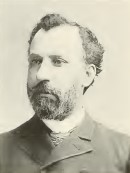 JOHN DAY SMITH is one of the
leading members of the legal profession in Minneapolis
and has been a resident of this city since 1885. This
has been long enough, however, for him to obtain a
position of prominence and influence and to impress
himself upon the community in a way in which only the
possessit.in of high character and extraordinary ability
could accomplish. Mr. Smith is the son of a
Kennebec County farmer in Maine. He was born February
25, 1845. His ancestry was English, having come to
America some fifty years before the Revolutionary War.
His great grandfather, James Lord, was a lieutenant in
the command of a company at the Battle of Bunker Hill.
Mr. Smith was a graduate of Brown University in the
class of 1872. He was given the degree of A. M. by Brown
University in 1875, of LL. B., by Columbia University in
1878, and of LL. M., by the same institution in 1881. In
recognition of his scholarship and other attainments,
Mr. Smith was elected a member of the Phi Beta Kappa
society at Brown University in the year of his
graduation. He taught school for three years after
leaving Brown University, then studied law at the
Columbia University and was admitted to the bar in the
city of Washington in 1881. He has been engaged as a
lecturer in the law department of Howard University and
the University of Minnesota, and at present is lecturer
on American constitutional law in the latter
institution. Mr. Smith is senior member of the firm of
Smith & Parsons. JOHN DAY SMITH is one of the
leading members of the legal profession in Minneapolis
and has been a resident of this city since 1885. This
has been long enough, however, for him to obtain a
position of prominence and influence and to impress
himself upon the community in a way in which only the
possessit.in of high character and extraordinary ability
could accomplish. Mr. Smith is the son of a
Kennebec County farmer in Maine. He was born February
25, 1845. His ancestry was English, having come to
America some fifty years before the Revolutionary War.
His great grandfather, James Lord, was a lieutenant in
the command of a company at the Battle of Bunker Hill.
Mr. Smith was a graduate of Brown University in the
class of 1872. He was given the degree of A. M. by Brown
University in 1875, of LL. B., by Columbia University in
1878, and of LL. M., by the same institution in 1881. In
recognition of his scholarship and other attainments,
Mr. Smith was elected a member of the Phi Beta Kappa
society at Brown University in the year of his
graduation. He taught school for three years after
leaving Brown University, then studied law at the
Columbia University and was admitted to the bar in the
city of Washington in 1881. He has been engaged as a
lecturer in the law department of Howard University and
the University of Minnesota, and at present is lecturer
on American constitutional law in the latter
institution. Mr. Smith is senior member of the firm of
Smith & Parsons.
He
has a splendid war record, having enlisted as a private
in Company F, Nineteenth Alaine Volunteers. June 26,
1862, when only a little over seventeen years of
age. He was with his
regiment in the battles of Fredericksburg,
Chancellorsville, Bristoe Station, Mine Run, The
Wilderness, Spotsylvania, Bethesda Church, North Anna,
Cold Harbor, Siege of Petersburg and Jerusalem Road. He
was slightly wounded at Gettysburg at the time of
Pickett’s charge, and at Jerusalem Road was shot in the
face, the ball passing through the mouth, knocking out
several teeth on the right side, shattering the jaw and
passing out at the ear. He lay upon the field of battle
over night, and when carried to the hospital the next
day, the surgeons had no hope of saving his life. Good
habits and a good constitution, however, were in his
favor, and he recovered. He was discharged as a corporal
April 25, 1865, his retirement at that time being on
account of wounds received in battle.
Mr.
Smith has always been a Republican, except that he
supported William J. Bryan for President in 1896, and
served in the lower house of the Minnesota legislature
in 1889, and represented the Thirty-fourth district in
the upper house in the sessions of 1891 and 1893. At the
session of 1891, Mr. Smith was the only Republican
member of the delegation from Hennepin County, and more
than usual responsibility devolved upon him on account
of the desperate efforts made to secure legislation
seriously impairing the efficiency of the patrol limits
and affecting other interests of vital importance to the
city, but upon this occasion he manifested his ability
to meet the emergency, for so able and skillfully did he
manage affairs in the senate that no changes were made
with regard to the patrol limits, but, on the other
hand, much needed legislation was promoted by him.
during the first session of his membership he was
chairman of the judiciary committee of the senate.
Mr. Smith has also been
highly honored by the members of the G. A. R., being
elected commander of the Department of Minnesota in
1893. He was the first master of Ark Lodge, A. F. &
A. M., and is a member of Ark Chapter, Darius
Conimandery, of the Knights Templar, and of Zurah
Temple. He is one of the most useful and active members
of the Calvary Baptist church. He was married in 1872 to
Mary Hardy Chadbourne, of Lexington, Massachusetts, who
died in 1874. In 1879 he married Laura Bean, of
Delaware, Ohio. He has four
children.
 SEAGRAVE SMITH
is senior judge of the district court of the Fourth
Judicial District, composed of Hennepin, Wright, Anoka
and Isanti Counties. Mr. Smith is of Welsh and English
Ancestry. His father was a farmer and dealer in
livestock in Stafford, Tolland County, Connecticut, and
was of Welsh descent. His ancestors were among the early
settlers at Scituate, Massachusetts, and those of his
mother were English, and settled at Uxbridge,
Massachusetts. Mary A. Smith’s maiden name
was Seagrave, from whom Judge Smith takes his name. SEAGRAVE SMITH
is senior judge of the district court of the Fourth
Judicial District, composed of Hennepin, Wright, Anoka
and Isanti Counties. Mr. Smith is of Welsh and English
Ancestry. His father was a farmer and dealer in
livestock in Stafford, Tolland County, Connecticut, and
was of Welsh descent. His ancestors were among the early
settlers at Scituate, Massachusetts, and those of his
mother were English, and settled at Uxbridge,
Massachusetts. Mary A. Smith’s maiden name
was Seagrave, from whom Judge Smith takes his name.
Seagrave Smith was born September
16, 1828, at Stafford, Connecticut.
When a boy he worked upon his father’s farm and
attended the school of the village until he was fifteen
years of age. He was then placed under the tutelage of
Rev. George W. Pendleton, a Baptist
clergyman, of whose church his father and mother were
members. After three years study with a tutor, he
entered the Connecticut Literary Institution, at
Suffield, Connecticut, where he was graduated in
1848. Seagrave had made up
his mind to be a lawyer, but his father was strongly
opposed to that conclusion, and offered to transfer him
one-half of his property and an equal partnership in the
business, and threatened that if his offer was not
accepted, he would furnish him no further financial
assistance. This did not deter the young man from his
purpose. He went to teaching school and reading law,
entering the office of Alvin T.
Hyde, September 9, 1849, at Stafford, his native
town. Mr. Smith continued his studies until he was
admitted to the bar, August 13, 1852. In the spring of
1851 he was appointed clerk of the Probate Court. Soon
after his admission to the bar, he made up his mind to
go west, but he was the only child of his parents and
his mother objected to his going so far away, and
prevailed upon his father to give him a thousand dollars
with which to buy a law library, if he would remain in
the east. Seagrave took the thousand dollars, bought his
library, and settled in Colchester, Connecticut, in
October, 1852, and began the practice of his profession.
In the fall of 1854 he was elected town clerk, in 1855
he was elected as a Democrat to the state senate, and
still later was appointed clerk of the Probate Court of
the Colchester district, which office he held until his
removal to the west in 1856.
In
July, 1856, Mr. Smith made a trip to
the west, in accordance with his long entertained
purpose visited Kansas, but was not pleased with the
prospect, and came to St. Paul. The outlook there was
more promising then he decided to make that his future
home. Settling up his business in Colchester, he
returned to Minnesota in the spring of 1857, and located
at Hastings, bringing his family, consisting of his wife
and two children. He formed a partnership with J. W. De
Silva, and began the practice of law. He continued in
that business at Hastings until 1877, when he removed to
Minneapolis. During his residence in Hastings, he was
the attorney for the Hastings & Dakota Railroad, the
St. Paul & Chicago Railway, the Minnesota Railway
Construction Company, and the Chicago, Milwaukee &
St. Paul Railroad. Mr.
Smith is a Democrat, and took an active part in politics
in Dakota County, holding many important positions,
among which was that of County Attorney, to which he was
elected in 1857; County Commissioner, to which he was
elected in 1860, Judge of Probate, to which he was
elected in 1861, and re-elected in 1863 and 1865,
holding the office six years. In 1867 he was elected to
the State Senate, and in 1873 was again chosen for
County Attorney. In 1875 he ran as an independent
candidate for the State Senate against Ignatius
Donnelly, and was defeated by a small majority. He took
an especial interest in the public schools, and was
influential in establishing the graded schools of
Hastings.
But
Hastings was too small a field, and in 1877 Mr. Smith
moved to Minneapolis, He formed a partnership with W. E.
Hale, which continued until the spring of 1880. For
three years he conducted his business without a partner,
but in 1883 he went into partnership with S. A. Reed,
which continued until March. 1889, when he was appointed
Judge of the District Court of the Fourth Judicial
District, which position he now holds. In 1890 he was
elected without opposition, being supported by all
parties, and was elected again in 1896 on the Democratic
ticket. In 1887 he was elected City Attorney by the City
Council, and held the office for two terms. Judge Smith
has been honored by his political friends with numerous
nominations to important positions, among which were
Judge of the District Court in the first Judicial
District, in 1864, and again in 1874. and Attorney
General of the State of Minnesota in 1869. In 1884 Judge
Smith was the Democratic nominee for District Judge for
the Fourth Judicial District, but was defeated by Hon.
A. H. Young. In 1888 he was nominated by the Democrats
as their candidate for Chief Justice of the Supreme
Court, but was defeated by Hon. James Gilfillan. He was
nominated by the Democrats for the same office in 1894,
but was defeated by the present incumbent, Hon. C.
M. Start. In each instance he ran ahead of his
party ticket, which was in the minority. Judge Smith as
a lawyer and judge possesses superior ability and strict
integrity, and has discharged the duties of the
responsible position he now occupies in such a manner as
to command the confidence and respect of the profession
and the public generally. Judge Smith is very domestic
in his habits. He enjoys the comforts of home and the
society of his family, and can always be found at home
when not engaged in business elsewhere.
He
has been married three times: first to Miss S.
Almira Cady, the eldest daughter of Captain John
P. Cady, of Monson, Massachusetts. The issue of this
marriage was four children, two sons and two daughters:
two of these are still living, Cady and Claribel. He
married for his second wife, Mrs. Fidelia P. Hatch widow
of Professor Homer Hatch, of Hastings, Minnesota. By
this marriage he had one son, Theron S., who is now
living. For his third wife he married Mrs. Harriet P.
Norton, of Otis. Massachusetts, widow of Albert T.
Norton, who had lived and died in Hastings, Minnesota.
She is still living, but has no living
children.
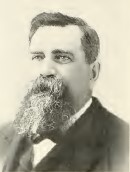 VERNON MORTON SMITH
chief of police of the city of Minneapolis, is a civil
engineer by profession and has followed that business
both in civil and military life. He is the son of Samuel
R. Smith, and was born in Stowe, Vermont, September 15,
1841. For four generations the family have lived in this
country, but the descent is mixed English, Irish and
Scotch. Mr. Smith had only the school advantages of the
public schools in his youth, but he made a special study
of civil engineering and fitted himself for that
profession. He had practiced his profession, however,
for only a brief time when the war broke out and he
enlisted as a private soldier.
During nine months of his service he was
connected with the engineer corps, the whole period of
his military service occupying two years. On his leaving
the army he returned to his home in Vermont, and resumed
the practice of his profession as engineer. His fellow
townsmen recognizing his worth selected him as their
representative in the Vermont legislature and he served
them two years in that capacity, 1867 and 1868. Mr.
Smith was on the look out, however, for better
opportunities than offered
themselves in Vermont in his line of business,
and in 1873 came to Minnesota and located in
Minneapolis. VERNON MORTON SMITH
chief of police of the city of Minneapolis, is a civil
engineer by profession and has followed that business
both in civil and military life. He is the son of Samuel
R. Smith, and was born in Stowe, Vermont, September 15,
1841. For four generations the family have lived in this
country, but the descent is mixed English, Irish and
Scotch. Mr. Smith had only the school advantages of the
public schools in his youth, but he made a special study
of civil engineering and fitted himself for that
profession. He had practiced his profession, however,
for only a brief time when the war broke out and he
enlisted as a private soldier.
During nine months of his service he was
connected with the engineer corps, the whole period of
his military service occupying two years. On his leaving
the army he returned to his home in Vermont, and resumed
the practice of his profession as engineer. His fellow
townsmen recognizing his worth selected him as their
representative in the Vermont legislature and he served
them two years in that capacity, 1867 and 1868. Mr.
Smith was on the look out, however, for better
opportunities than offered
themselves in Vermont in his line of business,
and in 1873 came to Minnesota and located in
Minneapolis.
He
lived here two years and during that time became
interested in the milling business in the old Dakota
Mills, under the name of Beedy, Guy & Co. He then
removed to Lyon County in this state, and while a
resident of that county he was twice elected County
Commissioner. In 1884 he returned to Minneapolis, and
has been a resident of this city ever since. Since
locating in Minneapolis he was for two years, in
connection with his son and son-in-law, T. H. Croswell,
surveyor for the government in the Red Lake agency,
where he laid out about fifty townships in the years
1890 and 1891. He served two years in the Minneapolis
city council from the Second ward, having been elected
in 1888. When W. H. Eustis was chosen
mayor of Minneapolis in 1892, he appointed Mr. Smith
Chief of Police. The appointment proved
to be a very fortunate one and Mr. Smith discharged the
duties of the office with such ability that when Robert
Pratt succeeded Mr. Eustis as Mayor in 1894 he retained
Mr. Smith at the head of the police department. Under
his administration changes were made in the management
of that department looking to a better discipline and a
greater general efficiency in the force.
Mr.
Smith is a member of the Commercial Club of Minneapolis,
the Engineers’ Club, the Knights of Pythias and the A.
O. U. W. He has a pleasant home on the East Side. His
wife was Isidore C. Lathrop, whom he
married at Stowe, Vermont, November 10, 1863. They have
three children —one daughter, Mrs. Mary I. Crosswell, of
Merriam Park; D. S. Smith, superintendent of the Street
Railway of St. Paul, and LeRoy V. Smith, superintendent
of a large farm in North
Dakota.
 FRANK W. SNEED is the pastor of
the First Presbyterian church in Minneapolis, one of the
leading churches of that denomination in the state.
He is thirty-four years of age and has been in
the ministry for nine years, and was honored by his alma
mater in 1896 with the degree of doctor of divinity,
being the youngest alumnus upon whom his college has
conferred this degree. After a residence of
two years in this city he finds himself one of its most
popular and influential ministers, with a rapidly
widening circle of friends and influence. On his
father’s side Mr. Sneed is descended from English stock,
and on his mother’s side his ancestors were
Scotch-Irish. His paternal ancestors
were attached to the established church. His
great-great-grandfather on his father’s side came to
America in an early day and settled in Albemarle County,
Virginia. He was Thomas Jefferson’s first schoolteacher,
and his son became Jefferson’s private secretary. At the
commencement of the revolutionary war this son enlisted
in the continental army, serving for the most part under
General Green, he was present at the batik- of Monmouth,
and could speak with the authority of an eye witness of
the historic interview between Washington and Lee on
that memorable day. He had two sons, John and Alexander,
of whom the latter, with his father, settled near
Danville, Kentucky, where the father died at the ripe
age of one hundred and one years. Alexander Sneed was a
farmer and left three sons and two daughters, all of
whom are now dead, save John M. Sneed, father of the
subject of this sketch, and Sallie Campbell Sneed, who
is better known as Mrs. Vest, wife of United States
Senator Vest from Missouri. FRANK W. SNEED is the pastor of
the First Presbyterian church in Minneapolis, one of the
leading churches of that denomination in the state.
He is thirty-four years of age and has been in
the ministry for nine years, and was honored by his alma
mater in 1896 with the degree of doctor of divinity,
being the youngest alumnus upon whom his college has
conferred this degree. After a residence of
two years in this city he finds himself one of its most
popular and influential ministers, with a rapidly
widening circle of friends and influence. On his
father’s side Mr. Sneed is descended from English stock,
and on his mother’s side his ancestors were
Scotch-Irish. His paternal ancestors
were attached to the established church. His
great-great-grandfather on his father’s side came to
America in an early day and settled in Albemarle County,
Virginia. He was Thomas Jefferson’s first schoolteacher,
and his son became Jefferson’s private secretary. At the
commencement of the revolutionary war this son enlisted
in the continental army, serving for the most part under
General Green, he was present at the batik- of Monmouth,
and could speak with the authority of an eye witness of
the historic interview between Washington and Lee on
that memorable day. He had two sons, John and Alexander,
of whom the latter, with his father, settled near
Danville, Kentucky, where the father died at the ripe
age of one hundred and one years. Alexander Sneed was a
farmer and left three sons and two daughters, all of
whom are now dead, save John M. Sneed, father of the
subject of this sketch, and Sallie Campbell Sneed, who
is better known as Mrs. Vest, wife of United States
Senator Vest from Missouri.
John M.
Sneed is a prosperous farmer in Pettis County,
Missouri. He was the captain of a company of state
troops during the civil war, and the owner of a large
number of slaves. After the war had ended he gave homes
to those of his former slaves who had not deserted him
at the time of emancipation. Frank W. Sneed was born on
this Pettis County farm, near the city of Sedalia, in
1862. Through his Grandmother Sneed, Mr.
Sneed is descended from Colonel Robert Campbell,
who commanded a regiment at Kings” Mountain under his
uncle, William Campbell, whose wife was a sister of
Patrick Henry. It was before Robert Campbell’s lines
that General Ferguson fell mortally wounded. Until he
was fifteen years of age Mr. Sneed attended the country
public school; after this a private academy in Sedalia,
where he remained until he was nineteen. In 1881 he
entered Westminster College at Fulton, Missouri, from
which he was graduated in June, 1885, going in the fall
of the same year to McCormick Theological Seminary, at
Chicago. To the deep religious influence of Westminster
College Mr. Sneed attributes in large part his
conversion, and choice of a profession.
His
first pastorate was at Riverside, Illinois, from May
1888 to February, 1892. He then went to Columbia,
Missouri, where he remained until January, 1895, when he
came to .Minneapolis. He had been invited to accept this
last charge in November preceding, and at the time the
invitation was extended he had never been in
Minneapolis, nor had he ever been seen by any member of
the First church. Mr. Sneed is a
vigorous writer and a graceful and polished speaker. At
college he won the William H. Marquess prize for
oratory, and subsequent years have amply fulfilled the
promise of that college triumph. On May 28, 1895,
Mr. Sneed was married to
Eulalie Hockaday, daughter of T. O. Hockaday, of
Columbia, Missouri, and grand daughter of Major James S.
Rollins, who, from 1861 to 1865 was a member of congress
from Missouri.
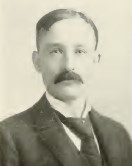 FRED BEAL
SNYDER Mr. Snyder is president of the City Council of
Minneapolis; was born in the first house built in what
originally constituted the city of Minneapolis.
This was the home of Colonel J. H.
Stevens. The house stood where the union depot
now stands. The date of Mr. Snyder’s birth was February
21, 1859. FRED BEAL
SNYDER Mr. Snyder is president of the City Council of
Minneapolis; was born in the first house built in what
originally constituted the city of Minneapolis.
This was the home of Colonel J. H.
Stevens. The house stood where the union depot
now stands. The date of Mr. Snyder’s birth was February
21, 1859.
His
father, Simon P. Snyder, came to Minneapolis from
Pennsylvania in 1855, and soon became actively
identified with the interests of this community,
operating extensively in real estate and as a
banker. He brought a great
deal of capital to this locality, and contributed in a
large degree to the development of its resources. Mr.
Snyder’s ancestry on his father’s side was Dutch, and
settled in Pennsylvania. The name was formerly spelled
Schneider. On his mother’s side his descent is from the
Ramseys and Stevensons, both Scotch families.
His
early education was received in the public schools of
Minneapolis, but before graduation from the high schools
he entered the University of Minnesota, from which
institution he graduated in 1881. His first business
experience was as a clerk in a book store at $4.50 a
week. During this time he began the study of law, and
went into the office of Lochren, McNair & Gilfillan;
afterwards he was with Koon.
Merrill & Keith. He was admitted to the bar
in 1882 and began the practice of law with Robert
Jamison, now on the district bench. The style of the
firm was Snyder & Jamison from 1882 to 1888. At that
time Mr. Snyder joined with others in organizing the
Minnesota Saving Fund and Investment Company, of which
he has been president since its organization.
Mr.
Snyder is rather independent in his political views, but
Republican in his political affiliations. He was elected
alderman of the Second ward in 1892 by the Republicans
for a term of four years. In 1895 he was elected
president of the City Council.
Perhaps his most notable service as a member of
that body was his leadership in the Council of the
controversy between the city and the Minneapolis Gas
Light Company, as a result of which the price of gas
for, all consumers was reduced from $1.60 to $1.30 net.
He also drew up and secured the passage of the ordinance
creating and regulating the department of inspector of
gas. In 1896 Mr. Snyder was elected to the state
legislature from the Thirtieth District.
Mr. Snyder is a member of the Commercial Club, of
the Six O’Clock Club, of the Chi Psi college fraternity,
and in recognition of his scholarship and ability he was
elected to membership in the Phi Beta Kappa Society of
the University of Minnesota. His church relations were
formerly with the Episcopal church, but more recently he
has become an attendant of the First Congregational
church.
On
September 23, 1885, he married Sue M. Pillsbury,
daughter of ex-Governor John S. Pillsbury. He has one
son, John Pillsbury Snyder, born January 8, 1888. His
wife died September 3, 1891. Mr.
Snyder was again married February 18, 1896, to
Leonora S. Dickson, of Pittsburg,
Pennsylvania.
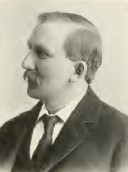 PROFESSOR HARRY
SNYDER, of the University of Minnesota, was born in the
town of Cherry Valley, Otsego County, New York, on
January 26, 1867. He was the son of David W. Snyder and
Mary Ann Harter. The father was a carpenter and farmer,
and a man of unusual mechanical skill and natural
ability. In later years he was superintendent of
construction of bridges and woodwork of the Herkimer,
Newport & Poland Railroad. Both Mr. and Mrs. Snyder
were descendants from the early Dutch settlers of the
Mohawk Valley. Their ancestors participated in the
Revolutionary War, as well as the War of 1812. PROFESSOR HARRY
SNYDER, of the University of Minnesota, was born in the
town of Cherry Valley, Otsego County, New York, on
January 26, 1867. He was the son of David W. Snyder and
Mary Ann Harter. The father was a carpenter and farmer,
and a man of unusual mechanical skill and natural
ability. In later years he was superintendent of
construction of bridges and woodwork of the Herkimer,
Newport & Poland Railroad. Both Mr. and Mrs. Snyder
were descendants from the early Dutch settlers of the
Mohawk Valley. Their ancestors participated in the
Revolutionary War, as well as the War of 1812.
The
subject of this sketch attended the country school and
later the graded school at Herkimer until he was
thirteen years old. After spending two summers in a
grocery store and a year in a printing office entered
Clinton Liberal Institution at Fort Plain, New York,
where he prepared for college, and in the fall of 1885
entered Cornell University. He turned naturally to the
scientific course, paying particular attention to
chemistry. At the end of the first two years in college
he was appointed private assistant to Dr. Caldwell, the
head of the chemical department of the university. This
position had always been held by a graduate
student. While serving in this
capacity, Mr. Snyder was engaged mainly with the
analysis of foods, drugs and farm products. He became
thoroughly familiar with the laboratory methods of
instruction and investigation, particularly along the
lines of agricultural chemistry, which was a subject not
then generally taught in the American colleges.
When he graduated in 1889 he
received honors for chemistry, and his graduation thesis
received honorable mention at the commencement, and in
the annual report of the university.
Immediately after his graduation he was appointed
to the position of instructor at Cornell.
In 1890 he was appointed assistant chemist of the
Cornell University Experiment Station. In this position
the work was mainly along the line of milk
investigation, and animal nutrition.
About the first work which he did in this
department brought him into prominence.
In
the fall of 1891 Professor Snyder came to Minnesota as
chemist of the Minnesota Experiment Station, and in 1892
was also appointed Professor of Agricultural Chemistry
in the University of Minnesota. Since assuming this
position ten bulletins have been published by Professor
Snyder, aggregating three hundred and seventy-five
pages, and dealing with soils, farm products, dairy
products, and human foods. His work in soil analysis has
been carried farther than any other experiment station,
and some of his methods have been adopted as official.
In addition to the bulletins, he has published short
reports in the journal of the American Chemical Society,
and in agricultural papers of the state.
Some of his articles have been translated and
published in the leading French and German journals. He
has also published a work upon the chemistry of
dairying. In his class room work he has been successful
in making practical applications of the science of
chemistry to the science and art of agriculture. His
laboratory work has been recognized by the Department of
Agriculture in the designation by the United States
Department of Agriculture of his laboratory as one of
the places where food investigations are to be carried
on in co-operation with the government.
In
1890 Professor Snyder was married to Miss Adelaide
Churchill Craig, daughter of Rev. Dr. Austin Craig,
formerly president of Antioch College, Ohio. Professor
Snyder is a member of the Phi Delta Theta Fraternity,
the I. O. O. F., R. A., the American Association for the
Advancement of Science and of the American Chemical
Society.
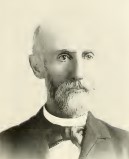 EDWIN PAGE STACY is the head of
the firm of E. P. Stacy & Sons, fruit commission
merchants in Minneapolis. He is the son of Isaac and
Orpah Page (Stacy), and was born at De Kalb, St.
Lawrence County, New York, May 31, 1831. His father was
a farmer in good circumstances, but, on account of
prolonged illness, he lost a large share of his
property, making it necessary for his sons to engage
early in the active business of life. EDWIN PAGE STACY is the head of
the firm of E. P. Stacy & Sons, fruit commission
merchants in Minneapolis. He is the son of Isaac and
Orpah Page (Stacy), and was born at De Kalb, St.
Lawrence County, New York, May 31, 1831. His father was
a farmer in good circumstances, but, on account of
prolonged illness, he lost a large share of his
property, making it necessary for his sons to engage
early in the active business of life.
Edwin Page, the youngest son of the
family, grew up on the farm, attending the public
schools, and Gouveneur Academy until he reached the age
of eighteen years. In the spring of 1850 he removed to
Utica, New York, where he obtained employment in the dry
goods house of Stacy, Goldein & Co. A year later he
went to Lafayette, Indiana, to assist in the management
of a branch store opened there by his former employers.
In 1854 he went to Dover, Illinois, and formed a
partnership with his oldest brother in general
merchandise, lumber, grain, etc. In 1861 he made another
move westward and located at Staceyville, Mitchell
County, Iowa, Here he remained four years, and in 1865
engaged in the mercantile business in Mitchell, Iowa. He
was doing business here January 1, 1879, when his eldest
son, Arthur Page Stacy, came of age and was taken into
partnership, the firm being E. P. Stacy & Son. Mr.
Stacy was held in high esteem in Mitchell, served four
terms as mayor, was superintendent of the Congregational
Sunday School for six years, and exerted a large and
wholesome influence in that community.
In
the fall of 1883 Mr. Stacy decided to establish a branch
of his business in Minneapolis, and, leaving his son in
charge of the business at Mitchell, began business in a
small way at 326 Second Avenue South, Minneapolis,
assisted by his second son, Harlan B.
Stacy. This venture was so successful that in the
summer of 1885 it was decided to close out the business
at Mitchell and concentrate the energies and resources
of the firm in Minneapolis.
Larger quarters were obtained and lines of custom
were extended. The business has continued to grow ever
since it was established, until now the trade enjoyed by
this firm extends all over the Northwest. Mr. Stacy is a
member of Plymouth Congregational Church, and an active
participant in the church work. Among commercial
organizations he belongs to the Jobbers’ and
Manufacturers Association and the Produce Exchange, and
is president of the Minneapolis branch of the National
League of Commission Merchants. In politics he is a
Republican, and faithful to his political duties,
although since coming to Minneapolis he has been less
actively identified with politics than formerly.
Mr.
Stacy was married at Gouveneur, New York, December 10,
1856, to Elizabeth E. Leonard, who died January 8, 1874,
mourned by her husband and three sons, Arthur Page,
Harlan B. and Clinton L. Six years later, October 21,
1880, Mr. Stacy was married to Mrs. Amelia (Wood) Kent,
at her home, in Naperville, Illinois, who had one son,
Willoughby B. Kent. Mrs. Stacy is a native of Vermont,
and a descendant of Governor Bradford.
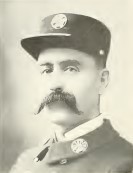 FRANK LORING
STETSON Of the men who risk their lives in the public
service there are none of whom more courage is required
than they who form the fire departments of our large
cities, and who hazard their lives in the protection of
life and property from fire. Mr. Stetson has been
connected with the fire department of Minneapolis for
many years and is at present its chief. FRANK LORING
STETSON Of the men who risk their lives in the public
service there are none of whom more courage is required
than they who form the fire departments of our large
cities, and who hazard their lives in the protection of
life and property from fire. Mr. Stetson has been
connected with the fire department of Minneapolis for
many years and is at present its chief.
His
father, Amasa Stetson, was a contractor and ship builder
in Maine. He was killed in Boston by falling from a
scaffold. His wife’s maiden name was Sarah S. Thorndike,
at present residing in Seattle, Washington, at the age
of eighty-seven years, and as active and in as good
command of her intellect as most women of sixty years.
Frank Loring was the youngest of
eight children. He was born December 19, 1853, in Knox
County, Maine. He removed with his
parents to Boston in 1865, and there attended the public
schools, following this with an academic course at Dean
Academy, Franklin, Massachusetts. As a boy, Mr. Stetson
earned his first money aboard a ship. He came to
Minnesota in the spring of 1869, settling in St.
Anthony, and shortly after joined Cataract Engine
Company No. 1, and when only sixteen years of age
received his initial lesson in firefighting.
In 1873 he was elected foreman of this company.
At the same time he obtained employment in the lumber
mills as filer and sawyer, and in 1878 took charge as
foreman of Leavitt & Chase’s mill. Later he resigned
to take a like position in the Merriam-Barrows Company’s
employ. On July 1, 1879, the old volunteer fire
department was disbanded and Mr. Stetson was appointed
foreman of the Cataract Company, under the partial paid
system. In 1880 he became second assistant engineer of
the fire department, and in December, 1881, assumed the
duties of first assistant chief engineer. On March 1,
1882, Mr. Stetson was appointed chief engineer, which
position he held until 1891. He was then appointed state
game warden, which position, however, he resigned to
accept a more lucrative one as superintendent of the
Compo Board Company’s plant. This position he held until
May, 1894, when he was appointed deputy internal revenue
collector. Mr. Stetson continued in this position until
January 10, 1895, when he was re-appointed as chief of
the fire department of Minneapolis. Mr. Stetson has
proved himself to be a faithful and efficient officer
and brave and courageous in the performance of his
duties.
On
November 4, 1884, he organized the full paid fire
department of the city of Minneapolis, and formulated
the rules and regulations governing the same. He was
also instrumental in securing the legislation making it
possible to maintain firemen’s relief associations,
which have been of incalculable benefit to the firemen.
While acting as game warden Mr. Stetson was active in
promoting the adoption of the new game laws of
Minnesota. He is a member of the various Masonic bodies,
including the Mystic Shrine, is Eminent Commander of
Darius Commandery, No. 7, member of the National
Association of Fire Engineers, the Minnesota State Fire
Association, the Elks, Odd Fellows and Knights of Honor.
He is also a member of the Hennepin Avenue Methodist
church. April 28, 1877, he was married to Ida L.
Winslow. Mr. and Mrs. Stetson have had five
children, four of whom are living, Horatio J., Viva T.,
Zuhrah Temple and Kingsley F.
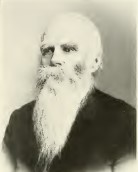 JOHN HARRINGTON
STEVENS The first settler on the west bank of the
Mississippi, on the site of the city of Minneapolis, was
Colonel John H. Stevens. Since he came to Minnesota and
took up his farm overlooking the Falls of St. Anthony,
in 1849, he has been one of the most conspicuous and
interesting figures in Minneapolis affairs. Few men have
the privilege of seeing great cities built up on the
sites of their modest frontier homesteads.
Colonel Stevens has not only seen this, but he
has been an active participant in the upbuilding
process. Colonel Stevens is a native of Canada, though
his parents and ancestors for generations were New
England people. He traces his line back to Captain
Stevens, who served with honor in King Philip’s war
during the early colonial times. Gardner Stevens,
Colonel Stevens’ father, was a native and a citizen of
Vermont. He married Deborah Harrington, also of Vermont.
who was the only daughter of Dr. John Harrington, who
was a surgeon in the colonial army during the
revolution. JOHN HARRINGTON
STEVENS The first settler on the west bank of the
Mississippi, on the site of the city of Minneapolis, was
Colonel John H. Stevens. Since he came to Minnesota and
took up his farm overlooking the Falls of St. Anthony,
in 1849, he has been one of the most conspicuous and
interesting figures in Minneapolis affairs. Few men have
the privilege of seeing great cities built up on the
sites of their modest frontier homesteads.
Colonel Stevens has not only seen this, but he
has been an active participant in the upbuilding
process. Colonel Stevens is a native of Canada, though
his parents and ancestors for generations were New
England people. He traces his line back to Captain
Stevens, who served with honor in King Philip’s war
during the early colonial times. Gardner Stevens,
Colonel Stevens’ father, was a native and a citizen of
Vermont. He married Deborah Harrington, also of Vermont.
who was the only daughter of Dr. John Harrington, who
was a surgeon in the colonial army during the
revolution.
John was their second son. He was
born on June 13, 1820. The boy was educated at the
common schools in the East, and in the public schools in
Wisconsin and Illinois, in which latter state he cast
his first vote in 1842. During his early
manhood the Mexican war broke out, and Colonel Stevens
enlisted and served through the war. For a year or so
after the close of the war he remained in Wisconsin and
Illinois, and in 1849 came to Minnesota.
Upon arriving at the Falls of St. Anthony.
Colonel Stevens formed a business partnership
with Franklin Steele, who had a store at the little
hamlet on the east bank of the river. But the young man
saw clearly the advantages of a site on the west bank.
This ground was then a military reservation, and
repeated attempts to secure permission to settle upon it
had been unsuccessful. Colonel Stevens,
however, finally secured official leave, and at once
took up a farm on the site now covered by the heavy
business portion of Minneapolis, and the great flour
milling district. The following year he
brought a young wife from Illinois to this new farm and
established the first home in Minneapolis property, or
the original Minneapolis. For a time Colonel Stevens
worked this river-side farm, but it soon became evident
that the ground was needed for a town. He was a
practical surveyor, and with generous public spirit he
platted the land to which he had already become
attached, laid out city lots and blocks, and
subsequently gave away many of them to people who would
occupy them. From that time on
Colonel Stevens was for many years foremost in
furthering the interests of the city and state. He took
a lively interest in the promotion of immigration and
the exploration and settling of the country west of
Minneapolis, in those days an almost unbroken
wilderness. Many incidents in his
long life in the state are of absorbing interest. For
several years after he built his house on the river bank
it was the center of the life of the young community. A
liberal hospitality was dispensed. Immigrants,
neighbors, hunters and explorers, and often the Indians
themselves, were entertained at that old house. In it
churches, societies, lodges and boards were organized.
The old building, after being moved from place to place
as the city developed, has at last found a resting
place, appropriately, near the Falls of Minnehaha, in
the beautiful park now belonging to the city, whither it
was moved by the school children of Minneapolis in the
spring of 1896.
Colonel Stevens’ love for
agriculture and everything pertaining to the farm was of
enormous benefit to the young farming community of
Minnesota. His influence was felt in the establishment
of the agricultural and horticultural associations, and
in the promotion of good methods of farming and stock
raising. He was the first man to bring thoroughbred
stock into the state. After his farm at the Falls was
made a city site, he carried on farming at other places,
at one time having a large establishment at Glencoe,
Minnesota. His lifelong devotion to agriculture was
honored by his election to the office of the president
of the Minnesota State Agricultural Society. Though
never seeking office. Colonel Stevens was in the earlier
times called to serve the public in several official
capacities. He was the first
register of deeds of Hennepin County and served for
several terms in both branches of the state legislature.
During the Indian uprising, as brigadier general of the
militia, he commanded troops and volunteers sent to the
front. With all his cares and duties he has during his
busy life found time to do a great deal of writing, and
has owned a number of papers. Among those which he has
conducted or edited were the St. Anthony Express, The
Chronicle, Glencoe Register, Farmer and Gardener,
Farmers’ Tribune, and Farm, Stock and Home. In 1890 he
published a book of personal recollections, entitled,
“Personal Recollections of Minnesota and Its People, and
Early History of Minneapolis.” He also contributed
several chapters to the publication known as “Atwater’s
History of Minneapolis.” Colonel Stevens was married on
May 1, 1850, to Miss Frances Hellen Miller, a daughter
of Abner Miller, of Westmoreland, New York. They were
married at Rockford, Illinois. They have had six
children. Mary Elizabeth, the first white child born in
Minneapolis, died in her seventeenth year. Cathrine D.,
the second child, is the wife of P. B. Winston.
The third daughter, Sarah, is not living.
Gardner, the fourth child, and only son, is a civil
engineer. Orma, the fifth, is
now Mrs. Wm. L. Peck. The sixth, Miss
Frances Hellen, is married to Isaac H. Chase, of Rapid
City, South Dakota. It is characteristic
of Colonel Stevens that, though comfortably off at the
present time, he has never made his wonderful
opportunities for personal profit a means of amassing
wealth. The public spirit and broad generosity of the
man have made such a course practically impossible for
him.
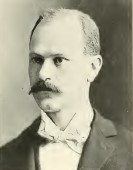 LORAN CHARLES
STEVENSON The subject of this sketch is a lawyer
practicing his profession in Minneapolis. He was born in
Oakland County, Michigan, August 20,
1861, the son of John W. Stevenson and Frances A.
Bird (Stevenson). John Stevenson was a farmer and
followed that occupation until recently, when he moved
into a small village near Detroit. He is of Scotch
descent, his grandparents having both been born in
Scotland. Mr. Stevenson’s descent on
his mother’s side is from the Wentworth family, quite
numerous in New York. The grandparents of Loran, both on
his mothers’ and father’s side, settled in Michigan in
the early days. LORAN CHARLES
STEVENSON The subject of this sketch is a lawyer
practicing his profession in Minneapolis. He was born in
Oakland County, Michigan, August 20,
1861, the son of John W. Stevenson and Frances A.
Bird (Stevenson). John Stevenson was a farmer and
followed that occupation until recently, when he moved
into a small village near Detroit. He is of Scotch
descent, his grandparents having both been born in
Scotland. Mr. Stevenson’s descent on
his mother’s side is from the Wentworth family, quite
numerous in New York. The grandparents of Loran, both on
his mothers’ and father’s side, settled in Michigan in
the early days.
Loran began his education in a
country school about a mile and a half from his father’s
home, to which he was obliged to walk every day. Later
he attended the Michigan state normal school for about
three years, and after that spent one year at the state
university at Ann Arbor, but did not complete the course
of study or graduate from any institution of that
kind. In 1883 he located in
Minnesota. He was then engaged as a commercial traveler
and made his headquarters in Mankato. He followed this
business for about three years, and while a resident of
Mankato, was married, November 8. 1887, to Miss Jenne
Lettus. The following day he came to Minneapolis to
live, and soon afterwards commenced the study of law
with C. J. Bartleson. July 12, 1889, he was
admitted to the bar and has been engaged in the practice
of law ever since. His business has gradually increased
and is now satisfactory in its results.
Mr.
Stevenson is a Republican and a member of the Union
League. He is also a member of the Commercial Club and
the Independent Order of Odd Fellows and the Improved
Order of Red Men. Mr. Stevenson was not
favored by fortune in his early life, and enjoyed only
such advantages as come the son of a farmer in moderate
circumstances, compelled to rely mainly upon himself for
whatever advancement he could obtain. After completing
his studies at the normal school and at the University
of Michigan he spent some time in the occupation of
teacher, but his business and professional experience
has been mainly in the profession of law. He has no
children.
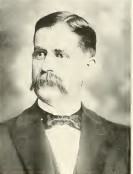 RANSOM L. STILLMAN
was born at Chester, Geauga County, Ohio, August 18,
1851. His father, Riley F. Stillman, was a farmer, and
was also engaged in the stock business in Ohio and
Illinois. He was a direct descendant of George Stillman
who came from England to Hadley, Massachusetts, in 1683,
and afterwards settled in Wethersfield, Connecticut. His
mother, Esther Clark Cutler was the daughter of Girard
Cutler and a cousin of Carroll Cutler, for many years
president of “Western Reserve,” now “Adelbeit College.”
She also came from New England stock, being a direct
descendant of James Cutler, who came to Watertown,
Massachusetts, about 1634 and afterwards settled in
Lexington. RANSOM L. STILLMAN
was born at Chester, Geauga County, Ohio, August 18,
1851. His father, Riley F. Stillman, was a farmer, and
was also engaged in the stock business in Ohio and
Illinois. He was a direct descendant of George Stillman
who came from England to Hadley, Massachusetts, in 1683,
and afterwards settled in Wethersfield, Connecticut. His
mother, Esther Clark Cutler was the daughter of Girard
Cutler and a cousin of Carroll Cutler, for many years
president of “Western Reserve,” now “Adelbeit College.”
She also came from New England stock, being a direct
descendant of James Cutler, who came to Watertown,
Massachusetts, about 1634 and afterwards settled in
Lexington.
In
1854, when Ransom was three years old, his father
removed from Ohio, and with his family settled in
Minneapolis, engaging in gardening and in the freighting
business. Ransom attended school in the public schools
of Minneapolis for a time, and later attended Geauga
Seminary, at Chester, Ohio, for two years. Leaving there
he entered Hillsdale College, Michigan.
While there he supported himself by working on a
farm and elsewhere during vacations, and by teaching a
part of the time. He graduated from there in the
classical course in 1876, receiving the degree of
Bachelor of Arts, and a few years later the degree of
Master of Arts. He was very successful
as a teacher, and on his graduation several good
positions were open to him in that line, but before he
entered college he determined on the profession of law
and never let himself lose sight of that purpose. On
account of health impaired by overwork while in college
he spent most of his time for a year and a half after
his graduation in traveling.
Late in 1877 he commenced the study
of law in the offices of Senator Burrows, and Judge
Bosworth, at Painesville, Ohio, where he remained a
little over two years. He was admitted to the bar by the
Supreme Court at Columbus, Ohio, May 5, 1880. On October
13, 1880, he was married to Ida J. Murray, of Concord,
Ohio, and immediately removed to Minneapolis, where he
has since resided. In his practice of law he has been
very successful, having practiced in the United States
District and Circuit Courts and in the state courts of
Ohio, Minnesota, North Dakota, South Dakota and
Colorado. Among some of the important cases that he has
handled might be mentioned the “May Patent Cases,” the
injunction cases between the Western Union and North
American Telegraph Companies, and some of the leading
real estate cases in the Minnesota Reports. He has also
had and still has an important part in the litigation
growing out of the bank failures of 1893, being engaged
in one of the cases brought by the state against the
banks and their bondsmen, in four of those brought by
the county against the banks and their bondsmen, and a
number of those brought by the creditors against the
stockholders. He has also taken an
active interest in the growth and development of
Minneapolis. He erected a number of good buildings, the
finest is the Stillman, now Rochester block, on Fourth
street.
His
wife, Ida Murray Stillman, died in 1891, leaving two
surviving children, Alice E., aged nine years, and
Murray L., aged seven years, both of whom are in the
Minneapolis public schools. On April 27, 1896, he was
married to Addie I. Koehl, relict of the late Dr.
Jeremiah Koehl. In politics Mr. Stillman has always been
a staunch Republican, and taken a lively interest in all
that interests his party.
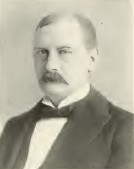 LUCIAN SWIFT, manager of The
Minneapolis Journal, is a native of Akron, Ohio, where
he was born July 14, 1848. His father, Lucian Swift,
moved from Connecticut to the Western Reserve when a
young man and settled there for the practice of law. He
served some time as clerk of the courts of Summit
County, and also represented the people of that locality
in the state senate. The genealogical line of the Swift
family is traced back to 1635, when the first member of
the family in this country came from England among the
early colonists. Judge Zephaniah Swift, Chief Justice of
Connecticut for nearly twenty years, was the great
grandfather of the subject of this sketch. LUCIAN SWIFT, manager of The
Minneapolis Journal, is a native of Akron, Ohio, where
he was born July 14, 1848. His father, Lucian Swift,
moved from Connecticut to the Western Reserve when a
young man and settled there for the practice of law. He
served some time as clerk of the courts of Summit
County, and also represented the people of that locality
in the state senate. The genealogical line of the Swift
family is traced back to 1635, when the first member of
the family in this country came from England among the
early colonists. Judge Zephaniah Swift, Chief Justice of
Connecticut for nearly twenty years, was the great
grandfather of the subject of this sketch.
His
father moved to Cleveland when Lucian was a mere lad.
Here the boy had the advantages of excellent schools and
was graduated from the high schools in 1865. He then
entered the University of Michigan, took a special
course in mining engineering and was graduated with the
degree of M . E.. While in college he was a member of
the Delta Kappa Upsilon fraternity. Returning to
Cleveland, he engaged in the mercantile business for
about two years, but not finding it congenial to his
tastes he adopted the course pursued by so many of the
enterprising and ambitions young men of the Eastern and
Middle states, and in the spring of 1871 came West for
the purpose of settling at Duluth, but obtained a
situation with George B. Wright, of Minneapolis. Mr.
Wright was a surveyor of government land. Soon
afterwards he became land agent for the Northern Pacific
Railroad Company, and for five years .Mr. Swift was
employed by him in making plats of land grants, rights
of way, and other work of that kind. This work sent him
still further onto the frontier. He camped at one time
in a tent on the site of the city of Fargo, and attended
an editorial banquet at Georgetown, on the banks of the
Red river, where he listened to that gifted traveler,
Bayard Taylor.
In 1876 he resigned his position
with Mr. Wright and paid a brief visit to his home. On
his return to the Northwest, he secured a position as
bookkeeper in a mercantile house, but soon found a
better situation as cashier of the Minneapolis Tribune.
He remained with the Tribune through various
administrations of its property and policies, acquiring
a thorough knowledge of the publishing business.
In November, 1885, in company with A. J.
Blethen, W. E. Haskell and H. W. Hawley. He
bought The Evening Journal and became manager, secretary
and treasurer of the company, the position which he
still holds. The Journal at that time had a circulation
of about ten thousand copies. Under his administration it
has been remarkably successful, and has increased in
patronage and circulation in a manner which
substantially demonstrates the wisdom and skill with
which it has been conducted. It has now a circulation of
forty thousand copies, occupies a fine building of its
own on Fourth street, and is one of the best equipped
newspaper establishments in the West. But, while giving
attention closely to his own responsible position, Mr.
Swift has been in demand as a promoter in public
enterprises, as a member of the Board of Trade, the
Business Union, the Exposition Association, of which he
was director and Treasurer, and has been identified
actively with many of the most important public
enterprises and undertakings in Minneapolis during the
past ten years, in which his excellent judgment and
business sagacity have been much relied upon. Mr. Swift
was married in 1877 to Miss Minnie E. Fuller. daughter
of Rev. George W. Fuller, now a resident of Lake City,
Minnesota. They have one daughter Grace F.
The information
on Trails to the Past © Copyright
may be used in personal family history research, with
source citation. The pages in entirety may not be
duplicated for publication in any fashion without the
permission of the owner. Commercial use of any material
on this site is not permitted. Please respect the
wishes of those who have contributed their time and
efforts to make this free site possible.~Thank
you! |



